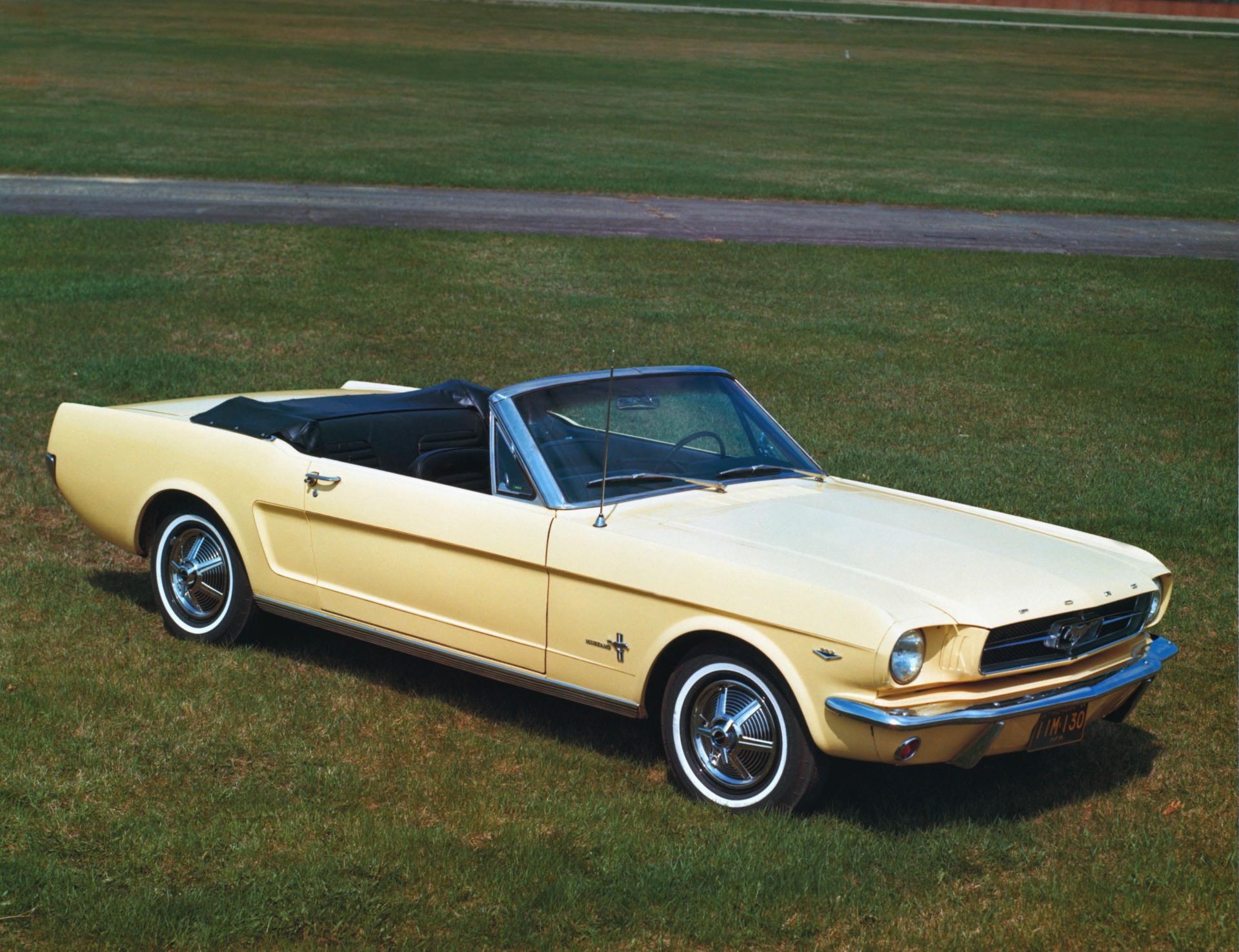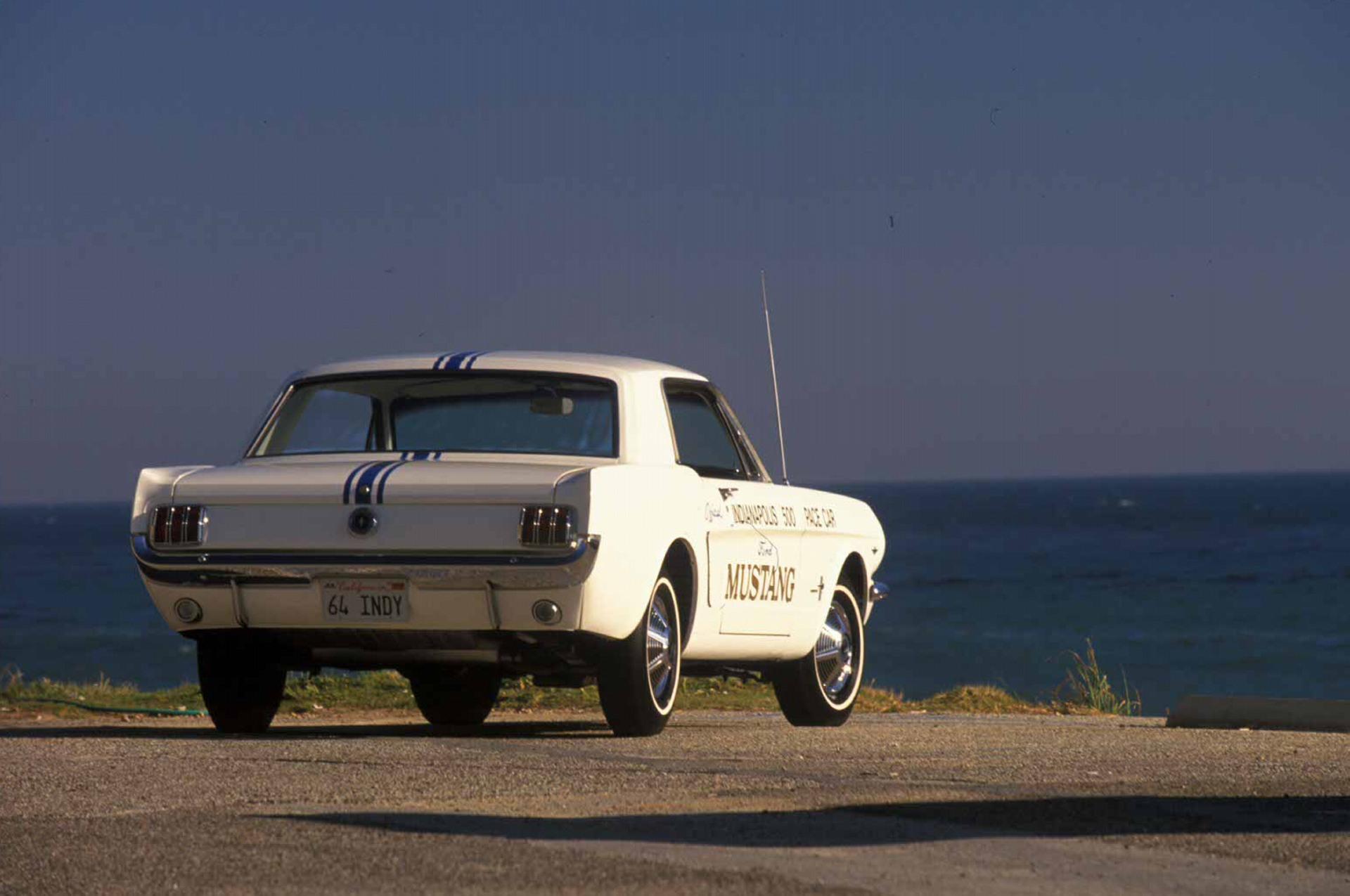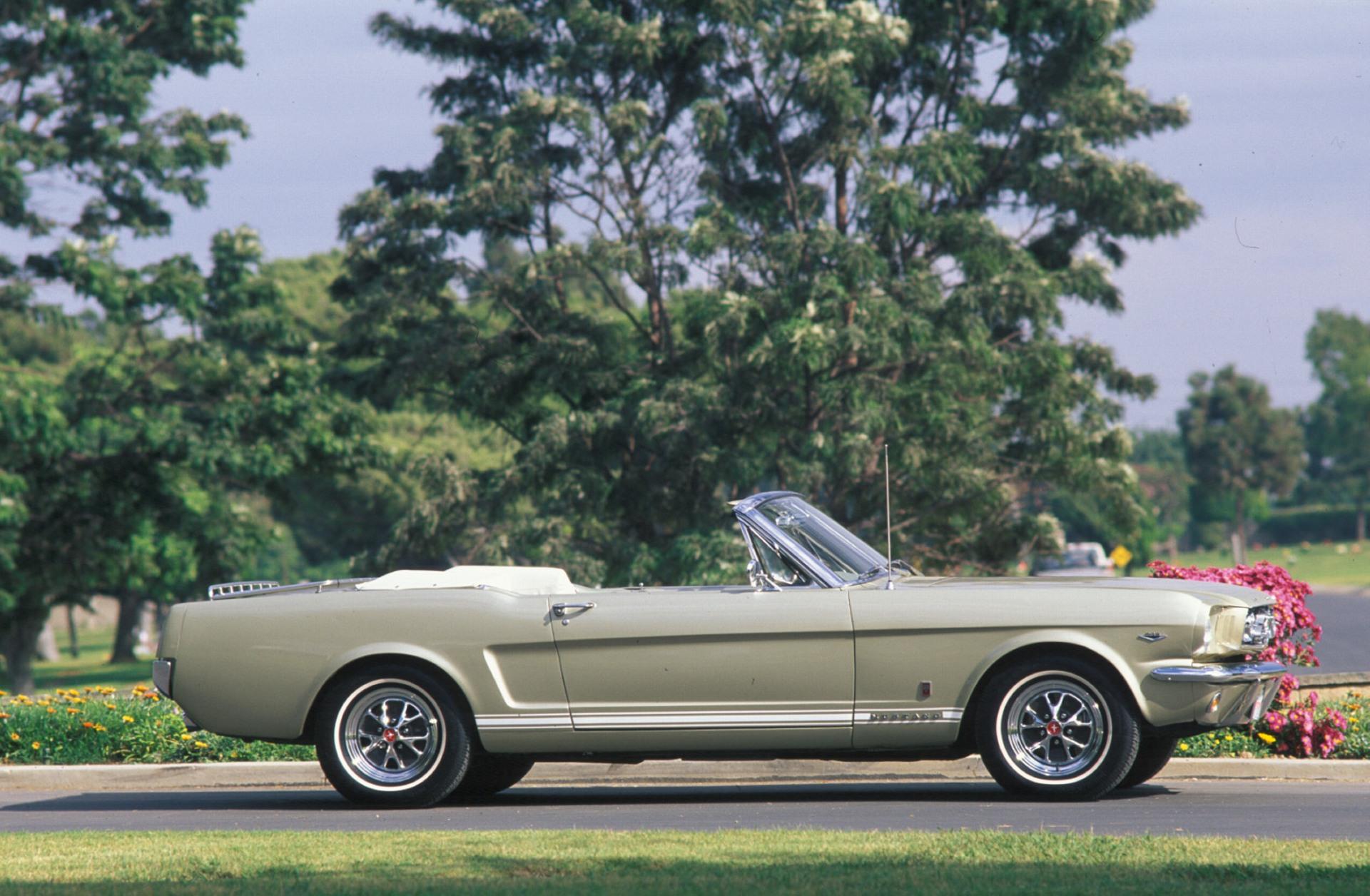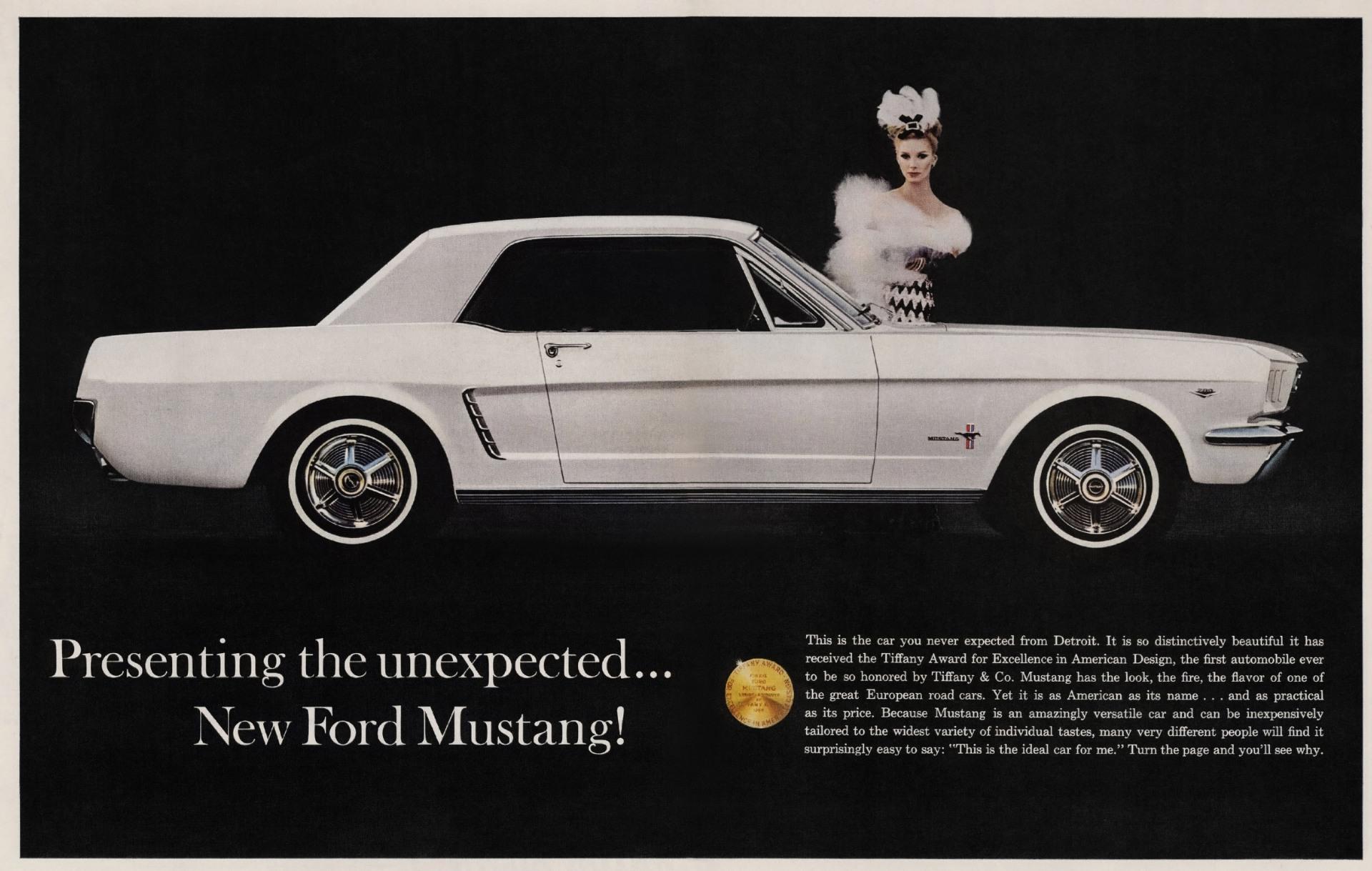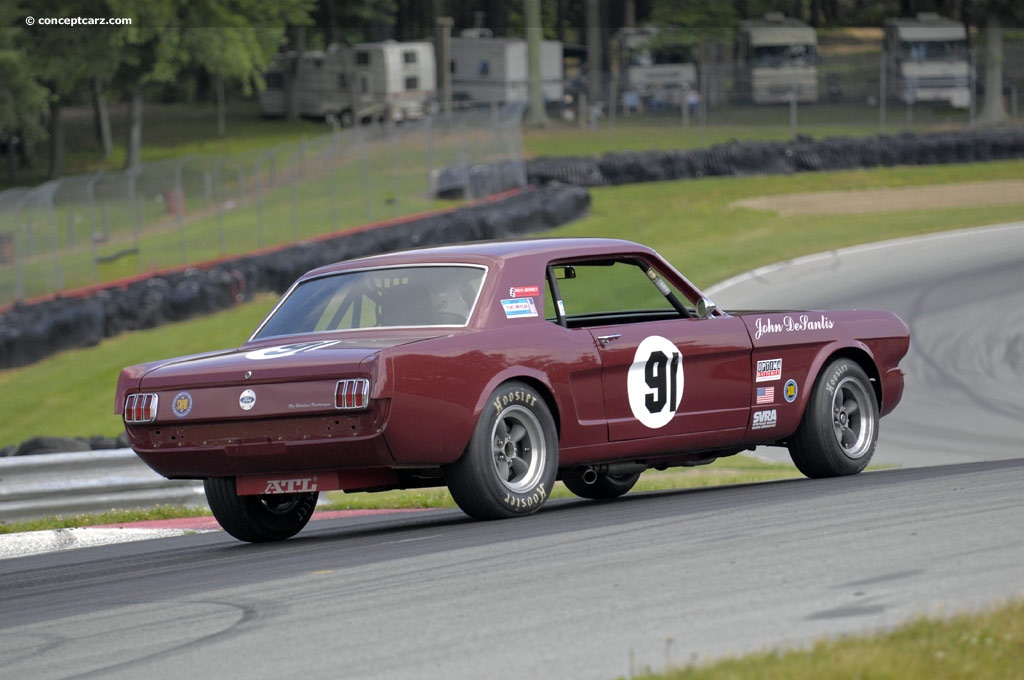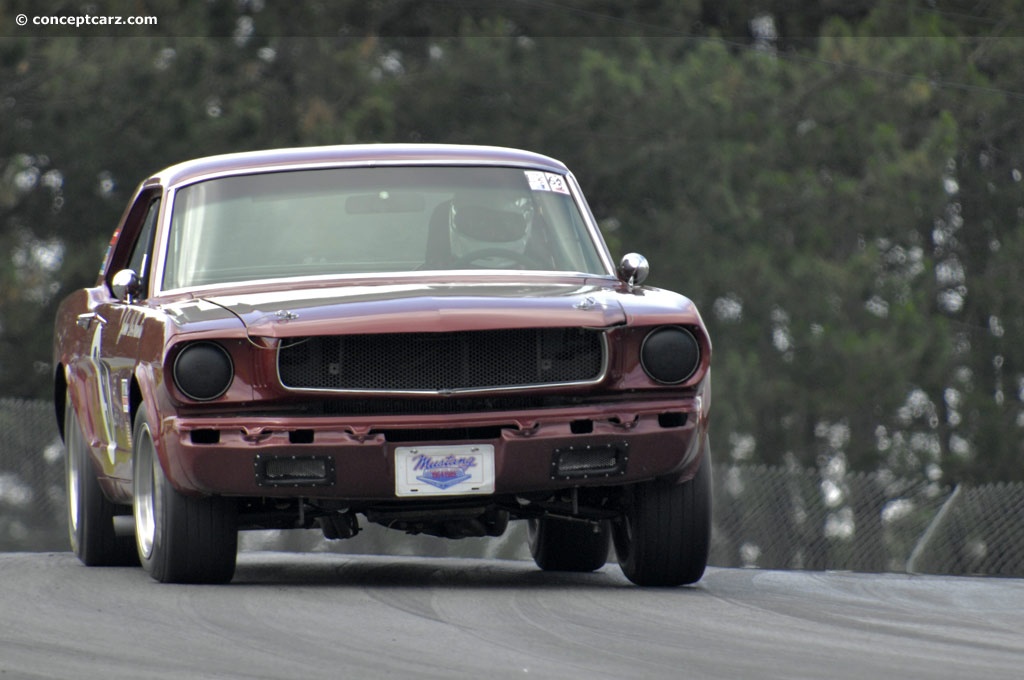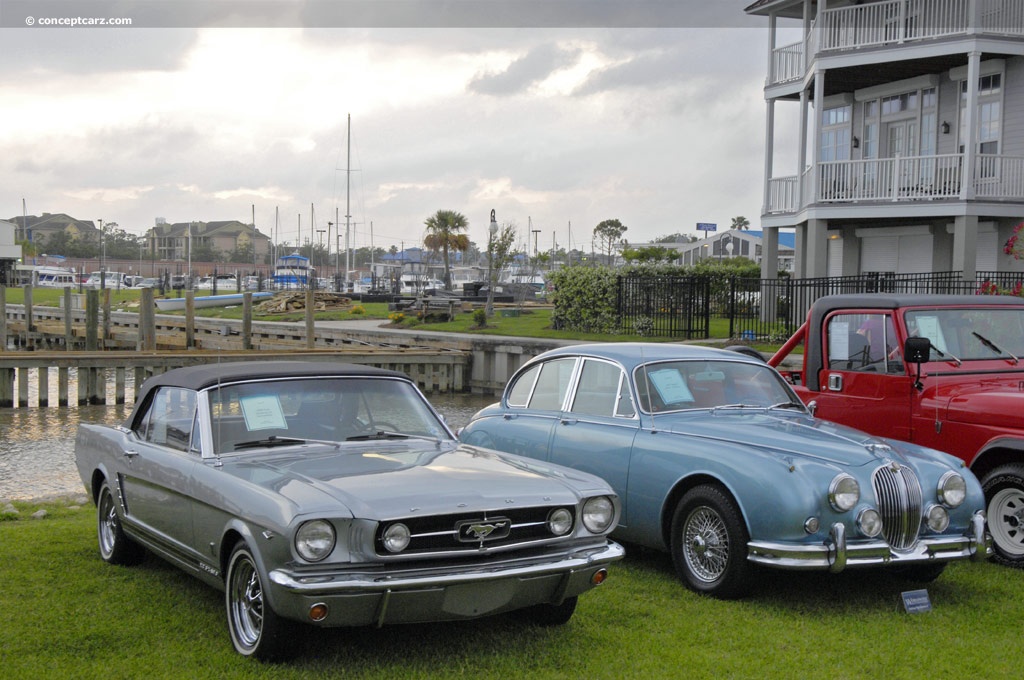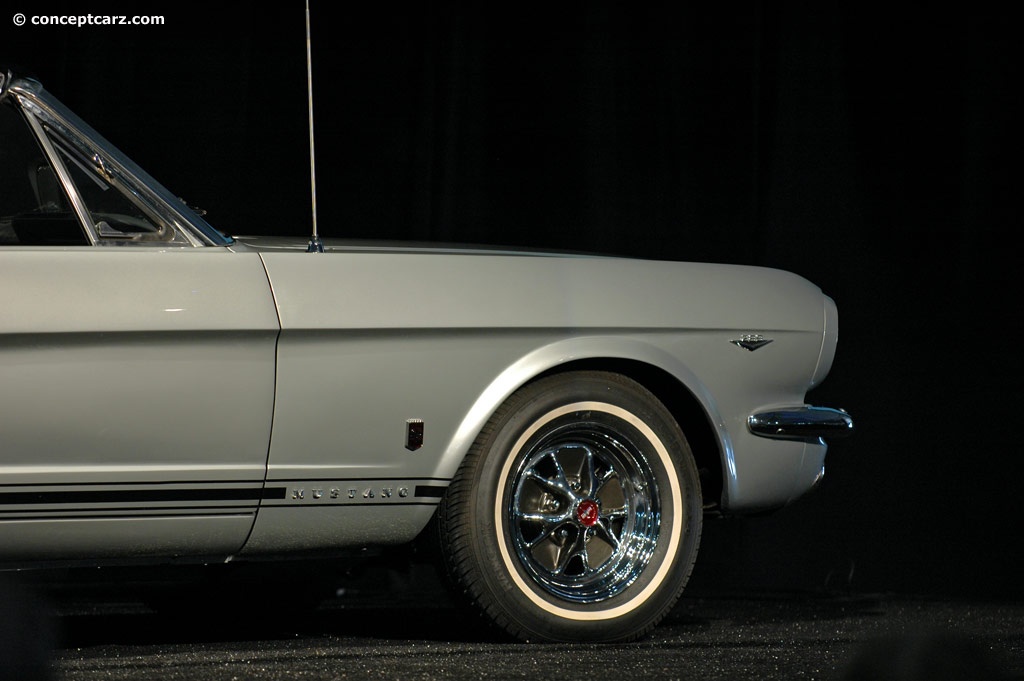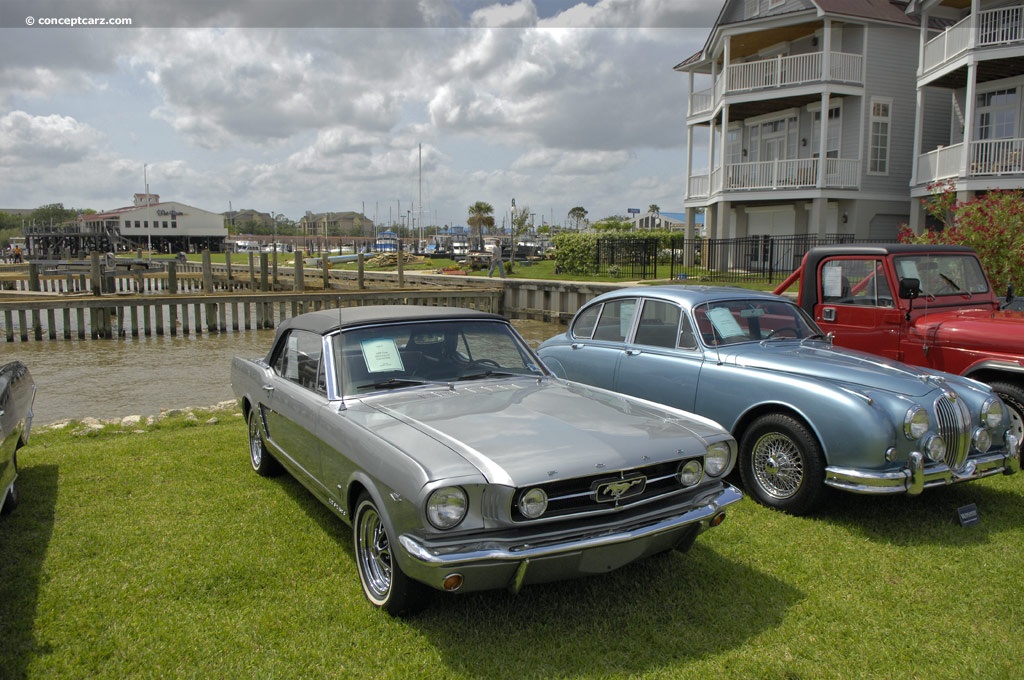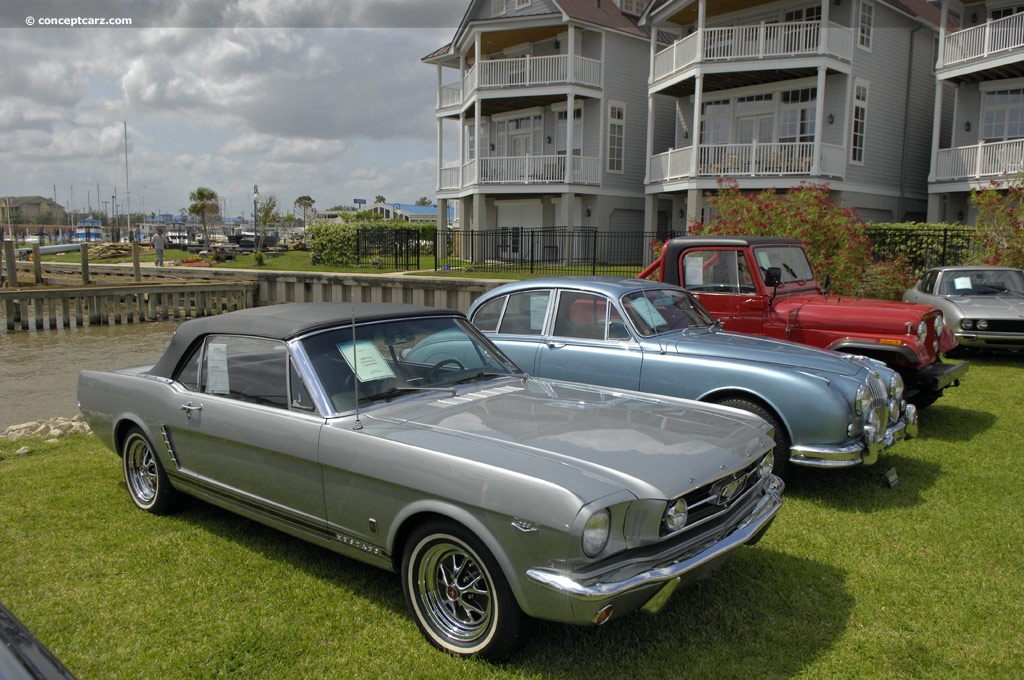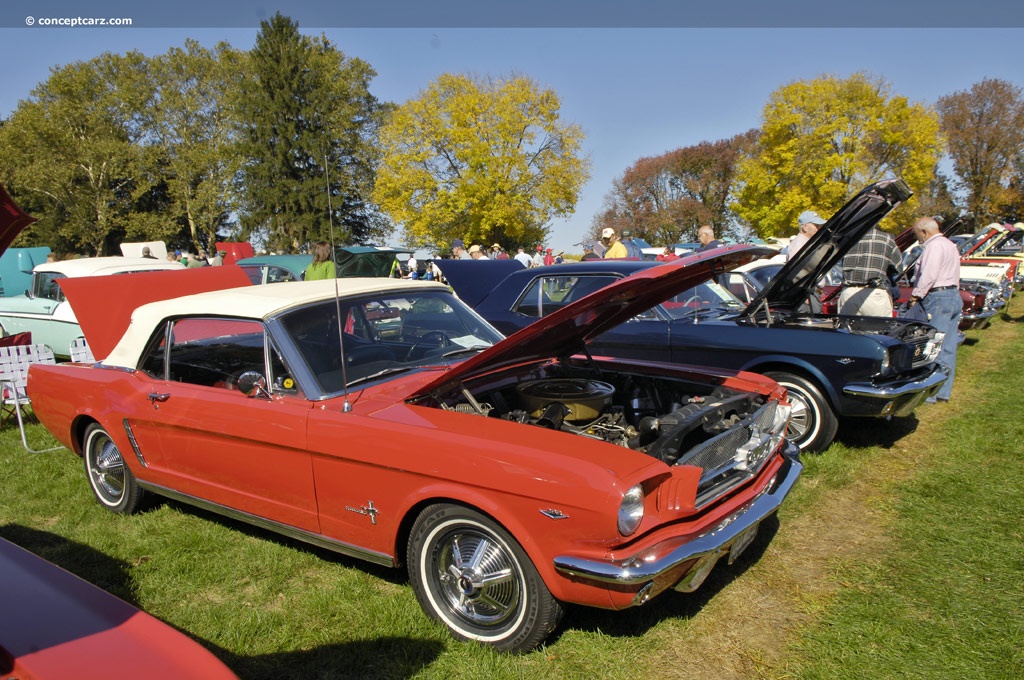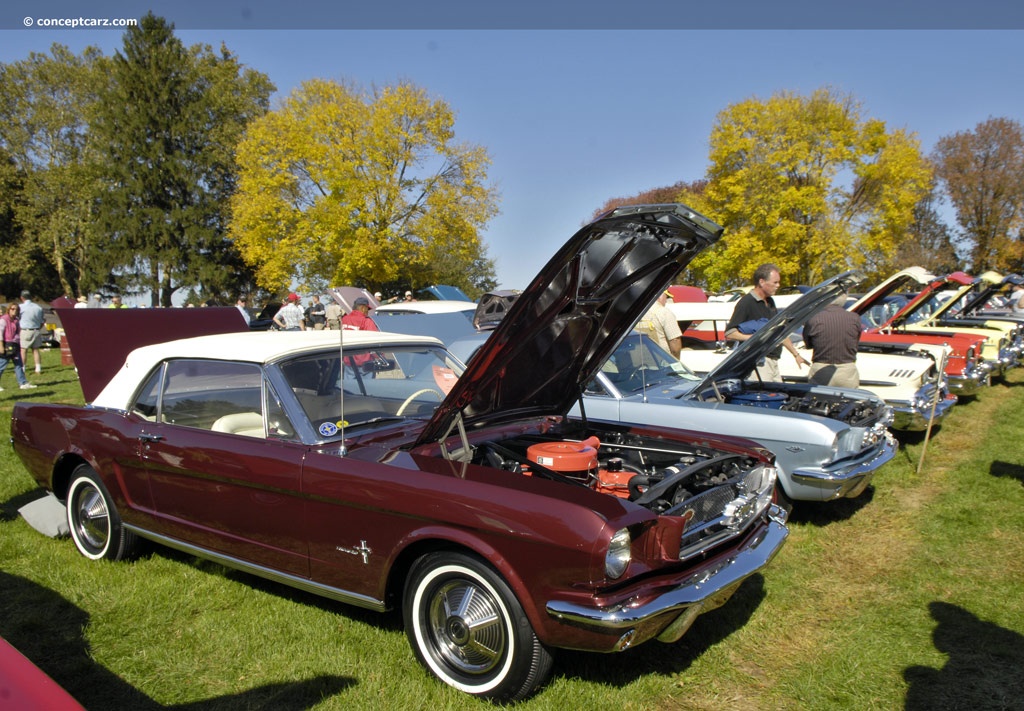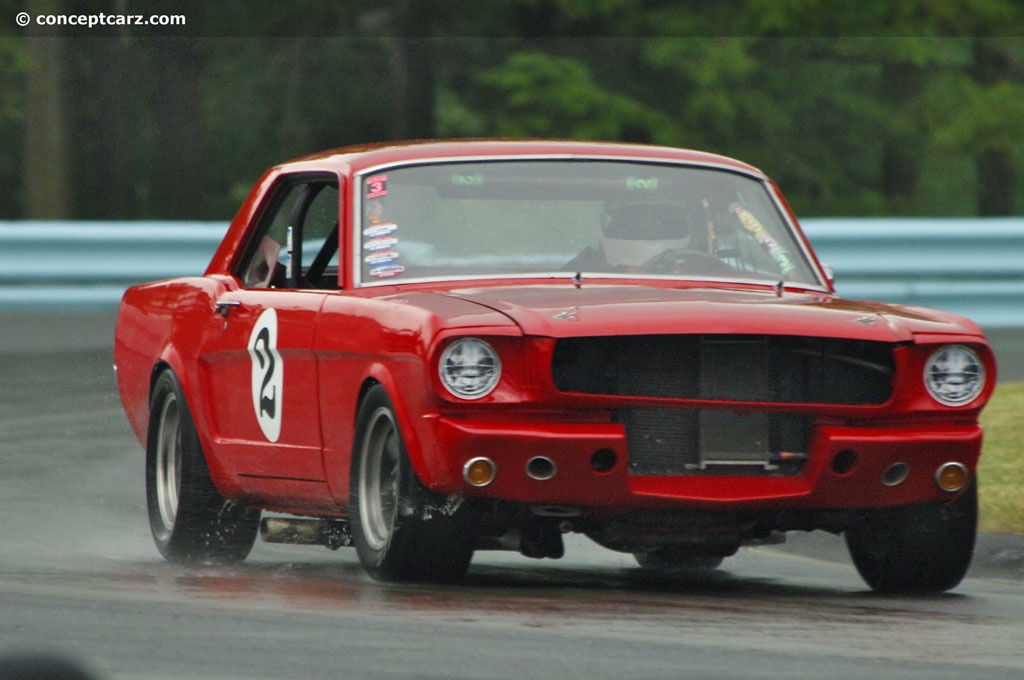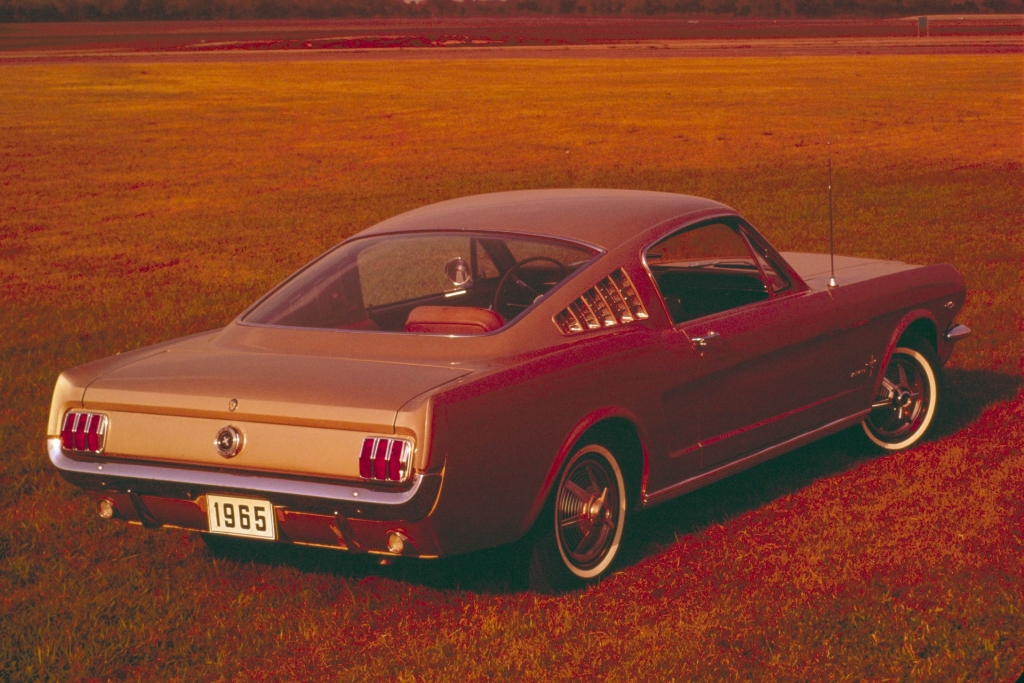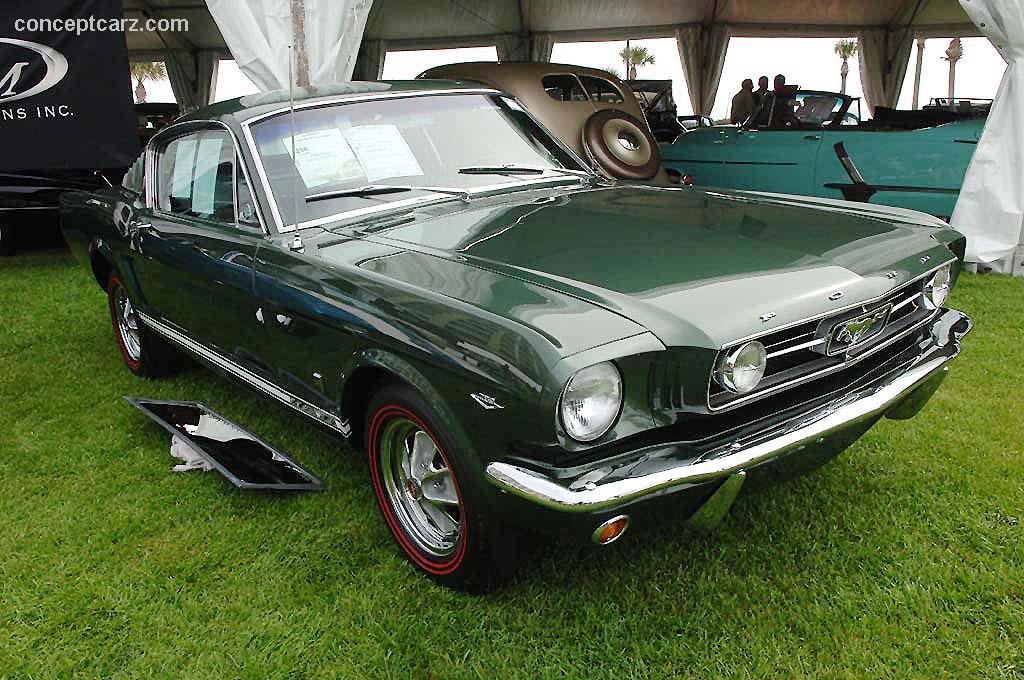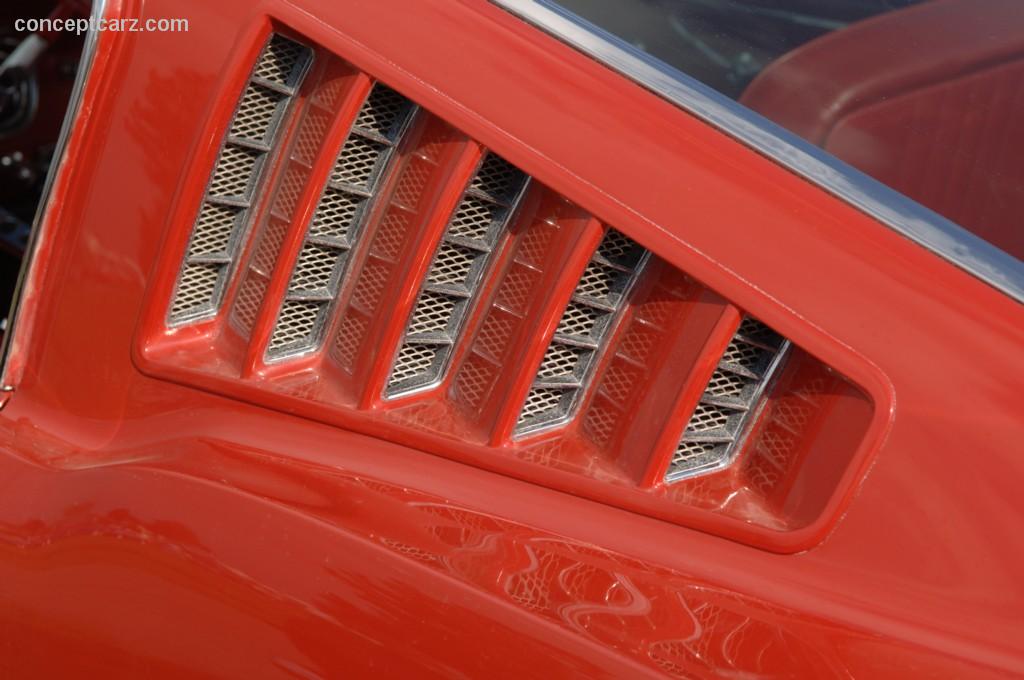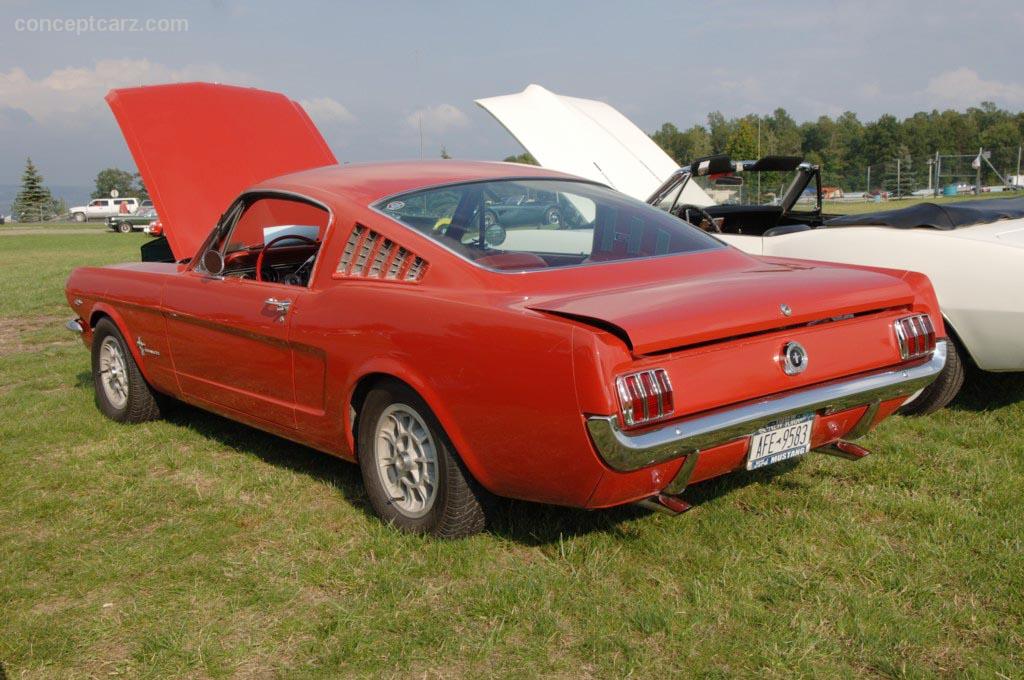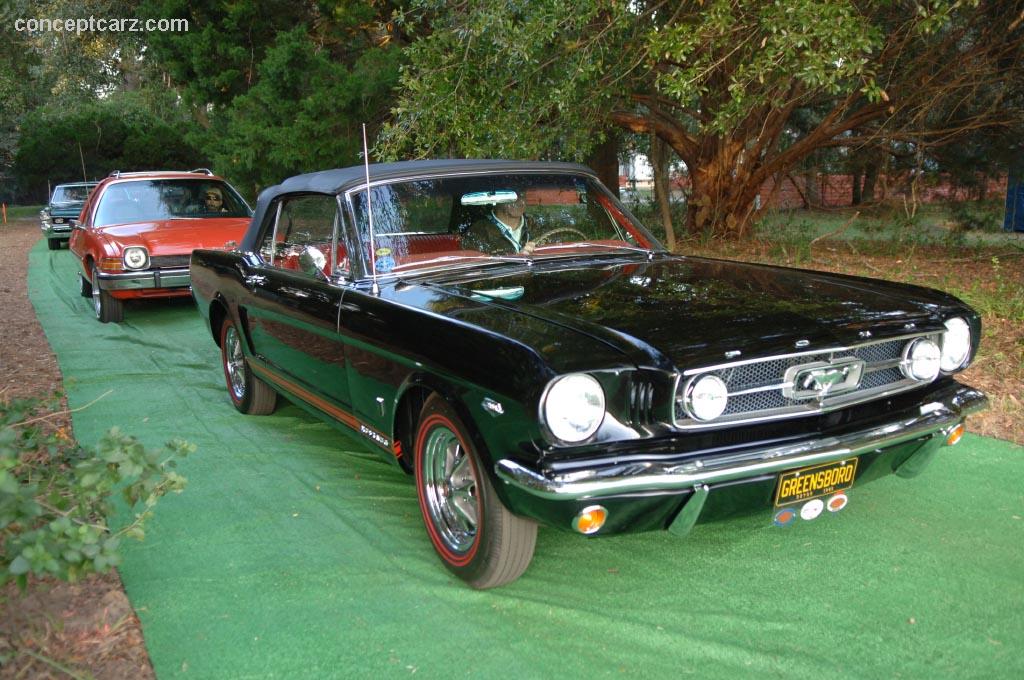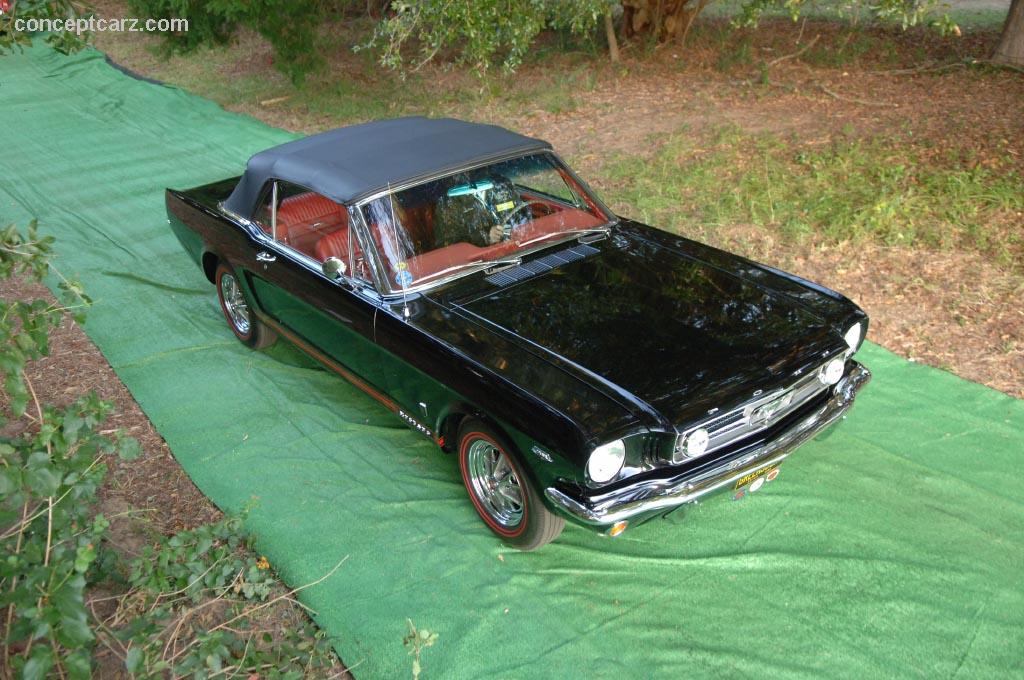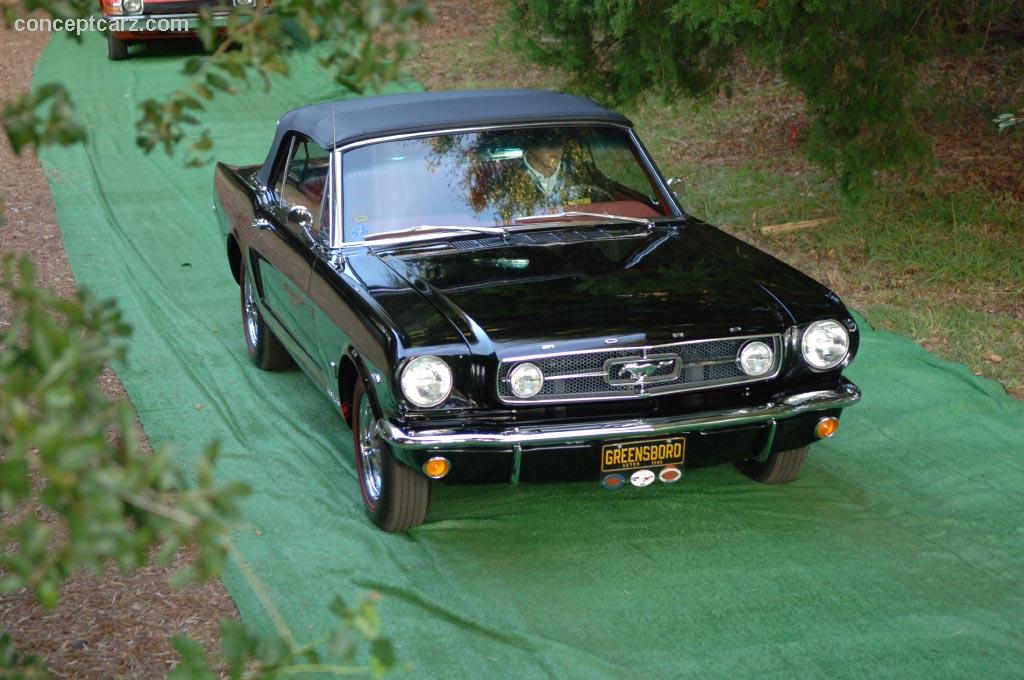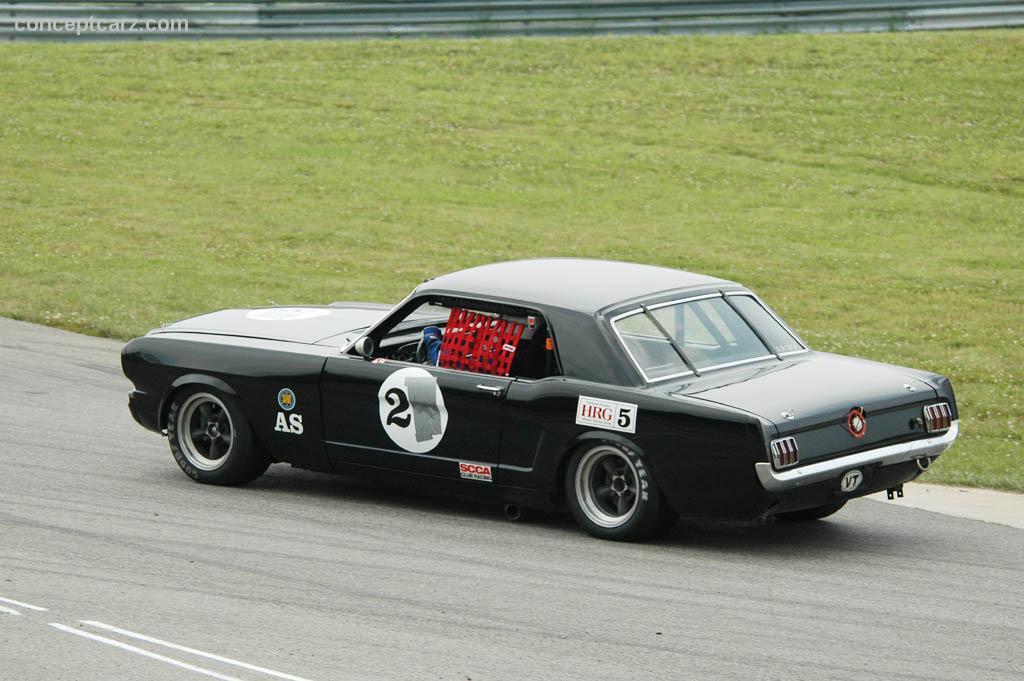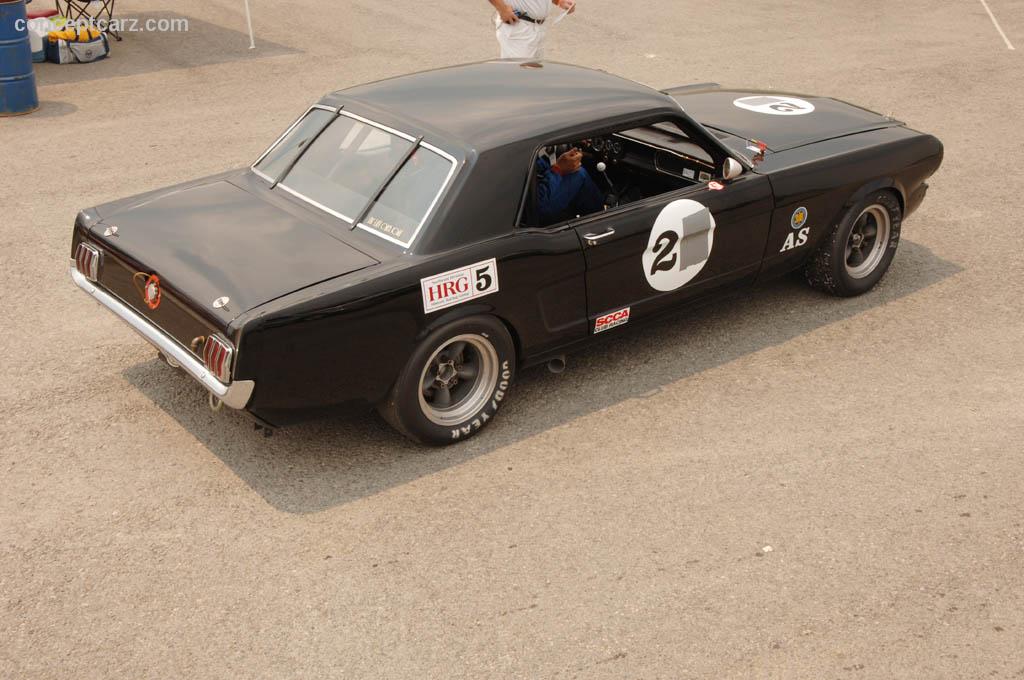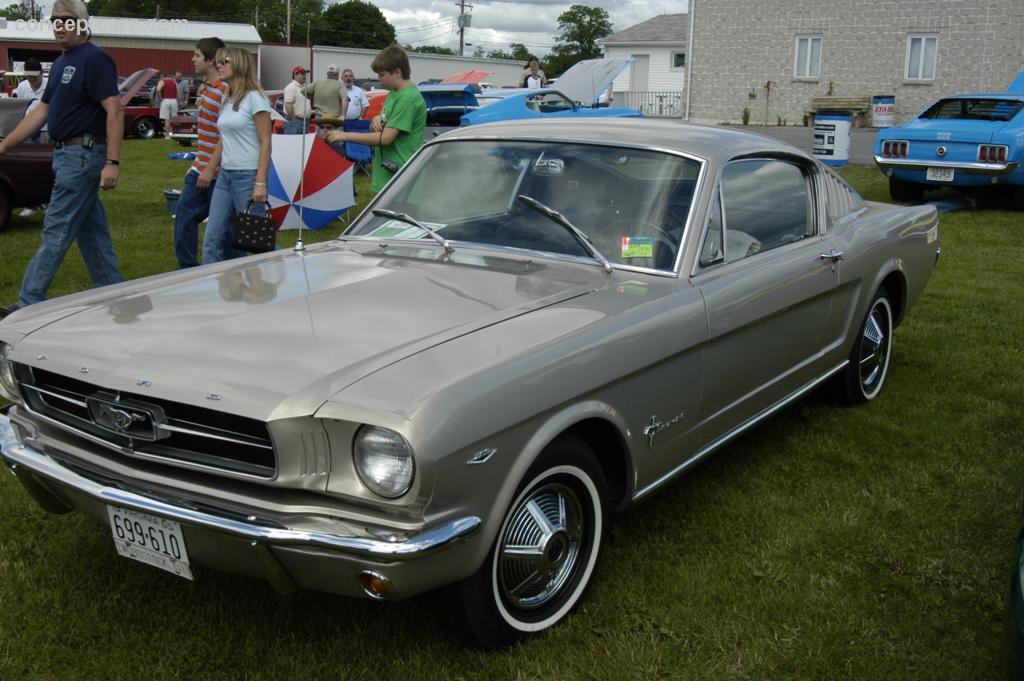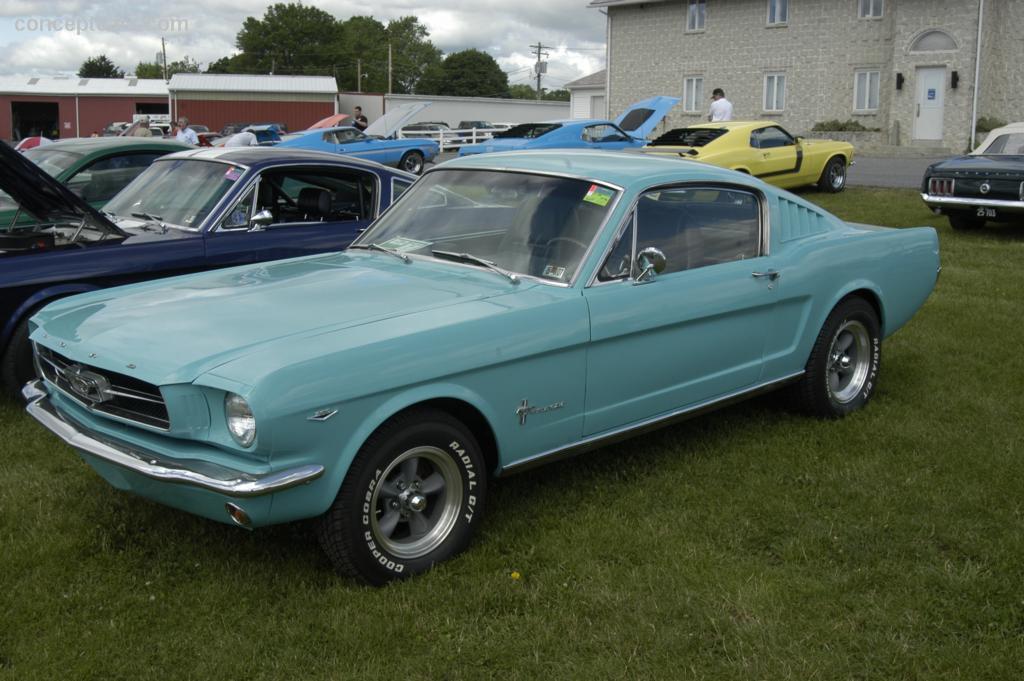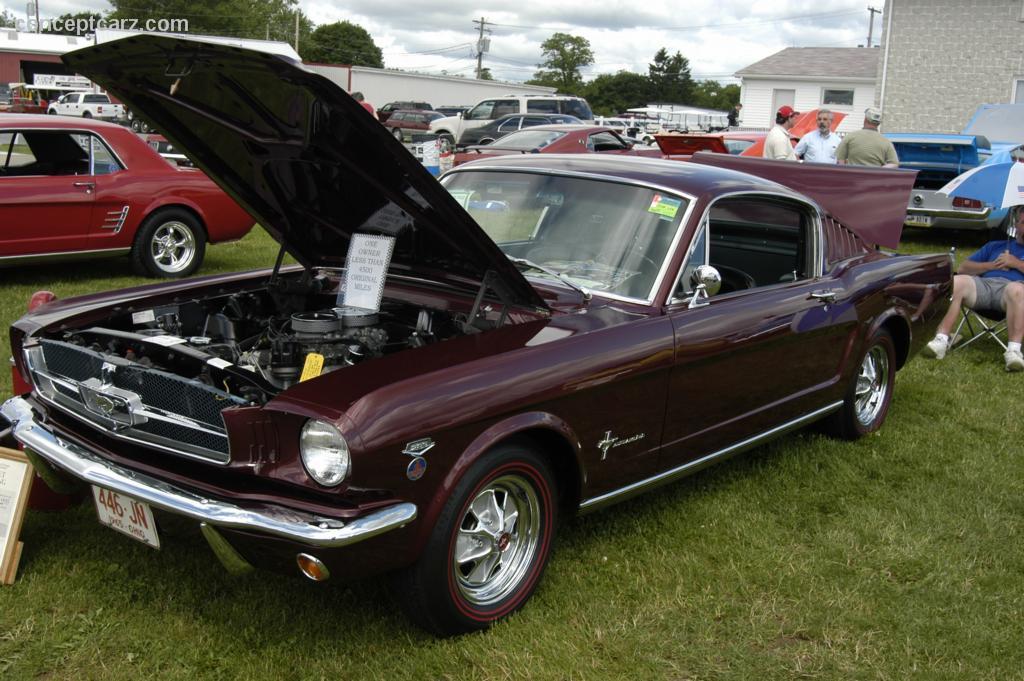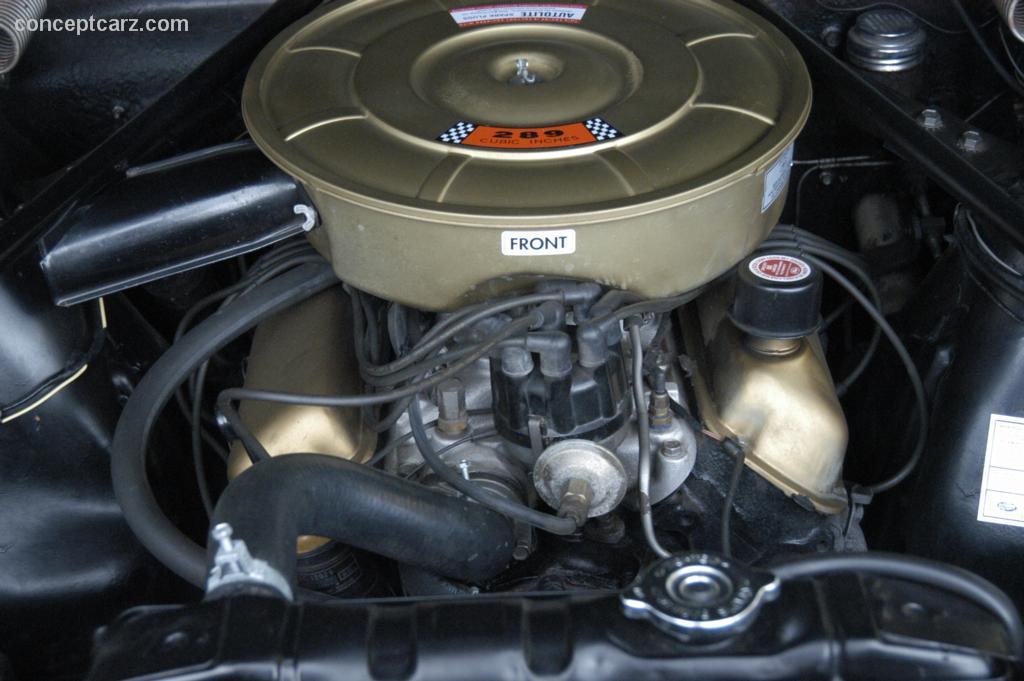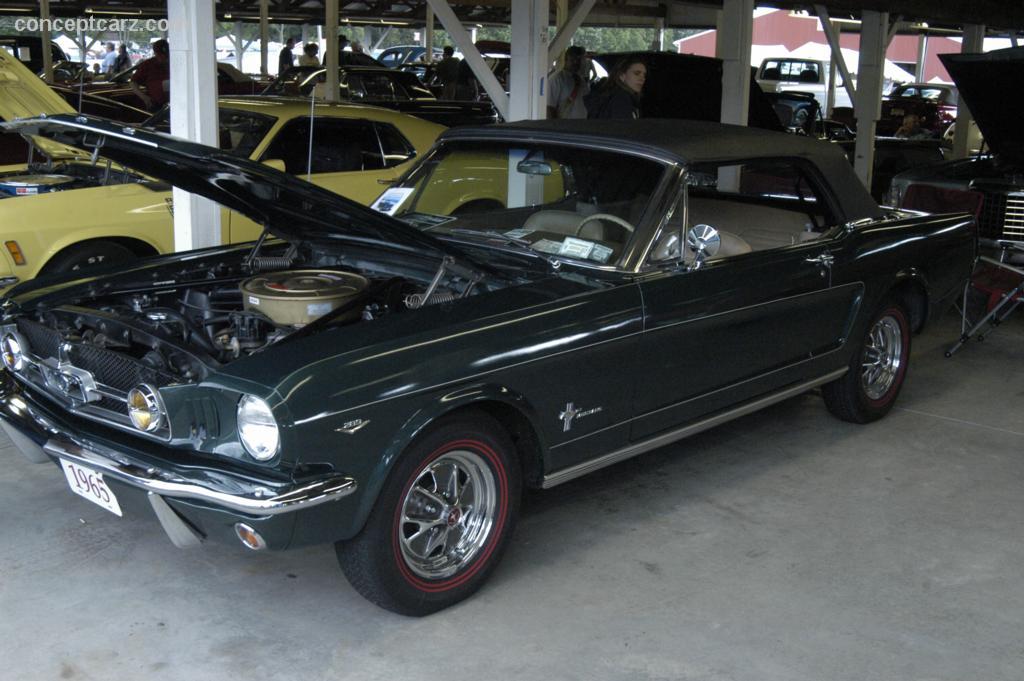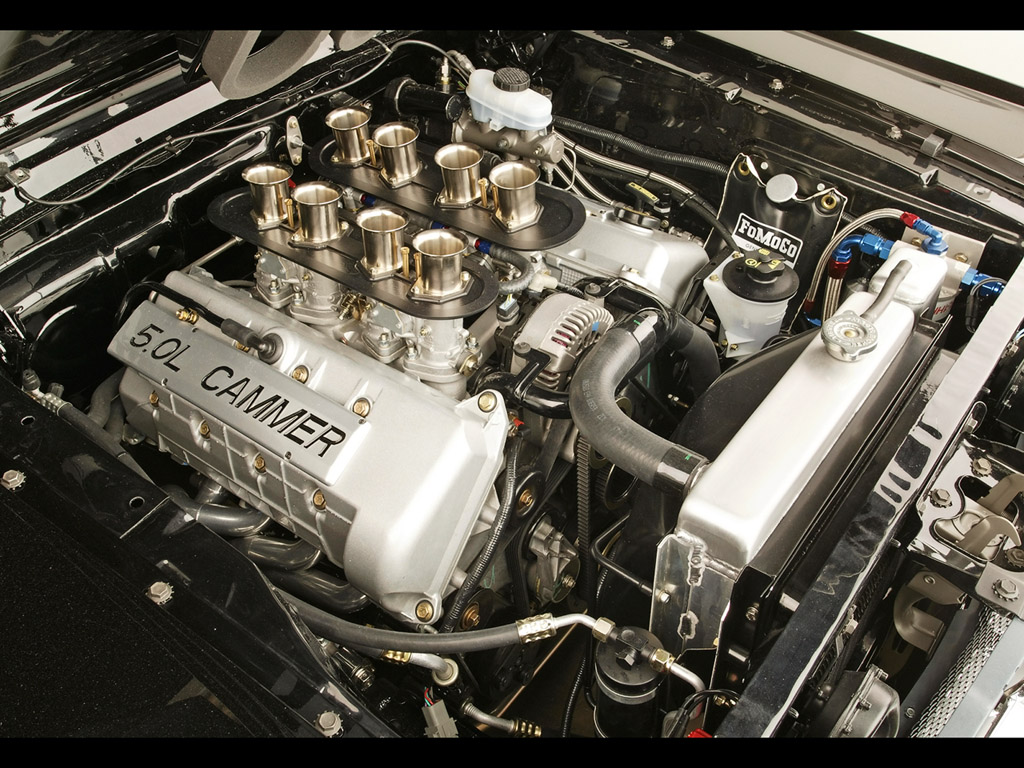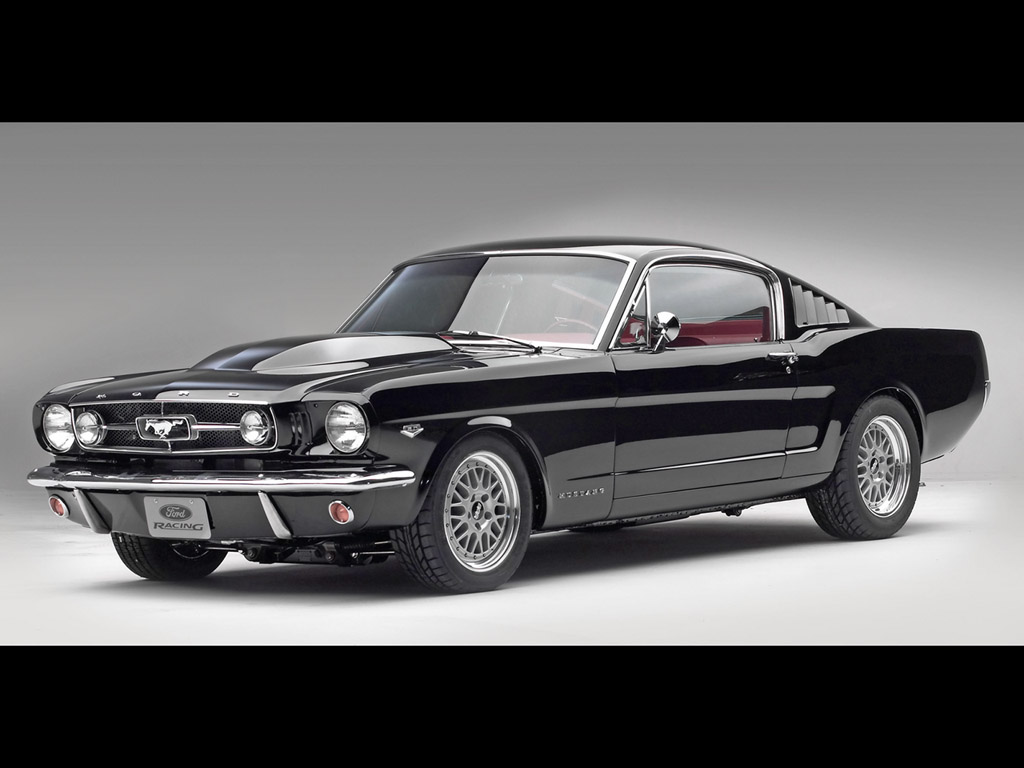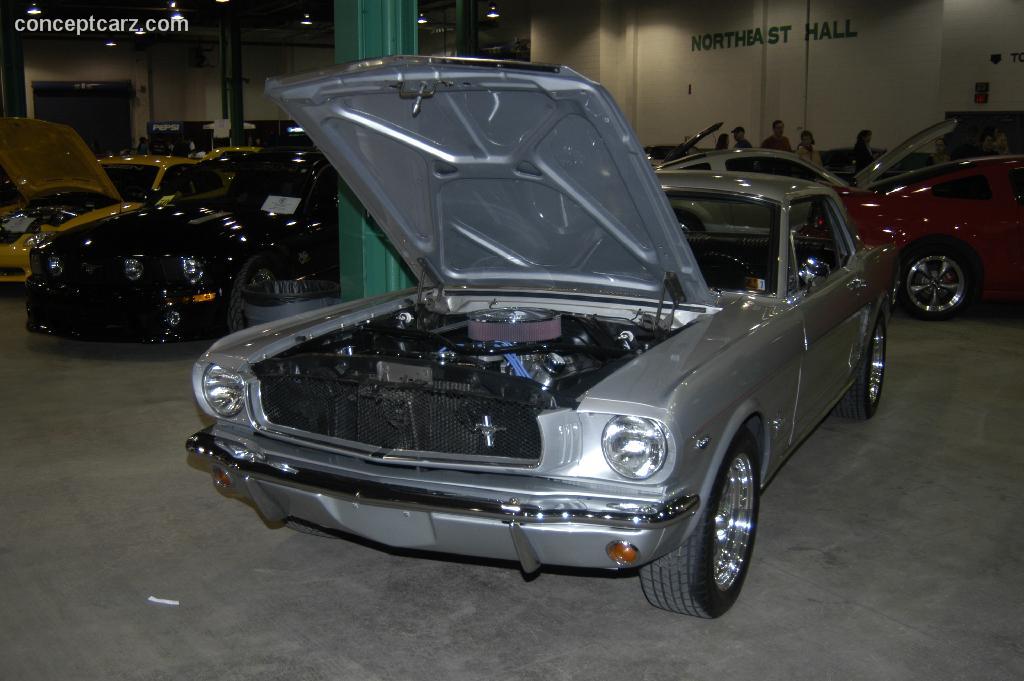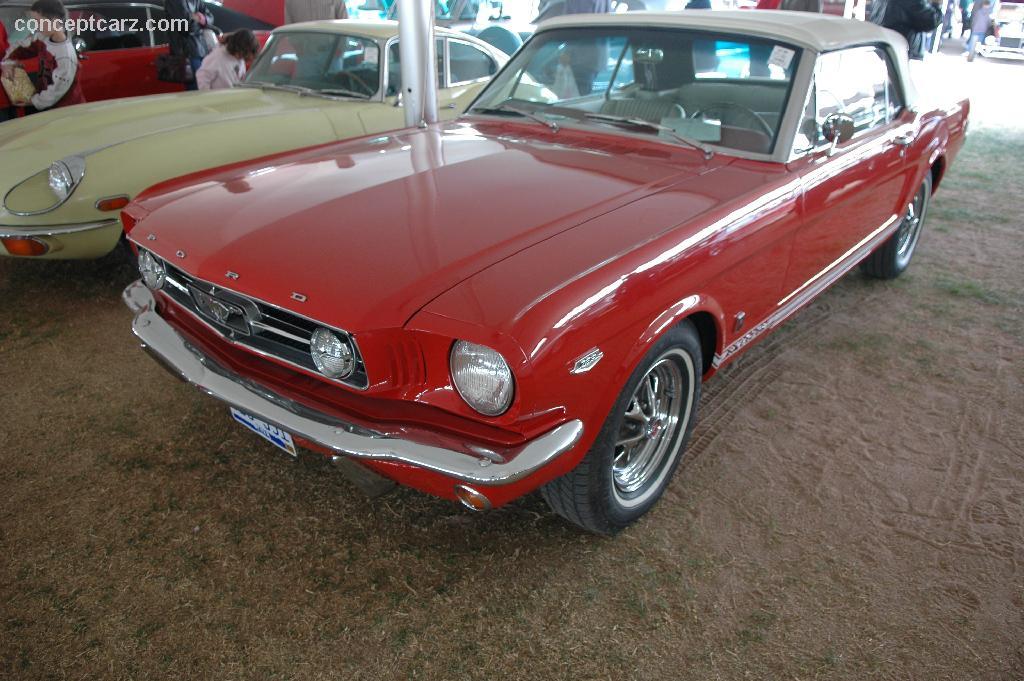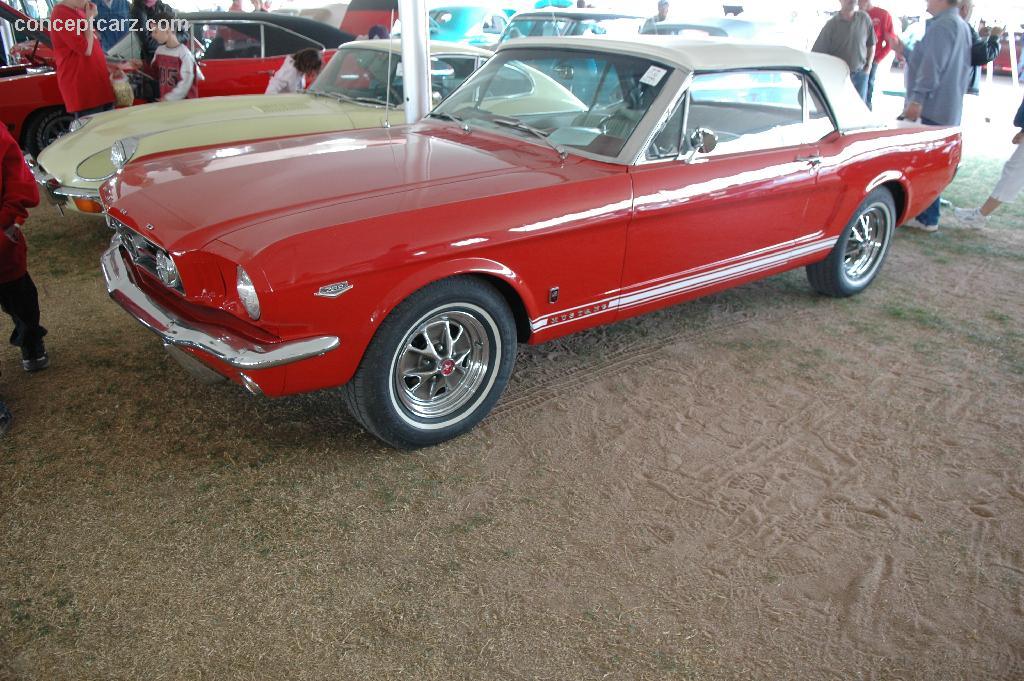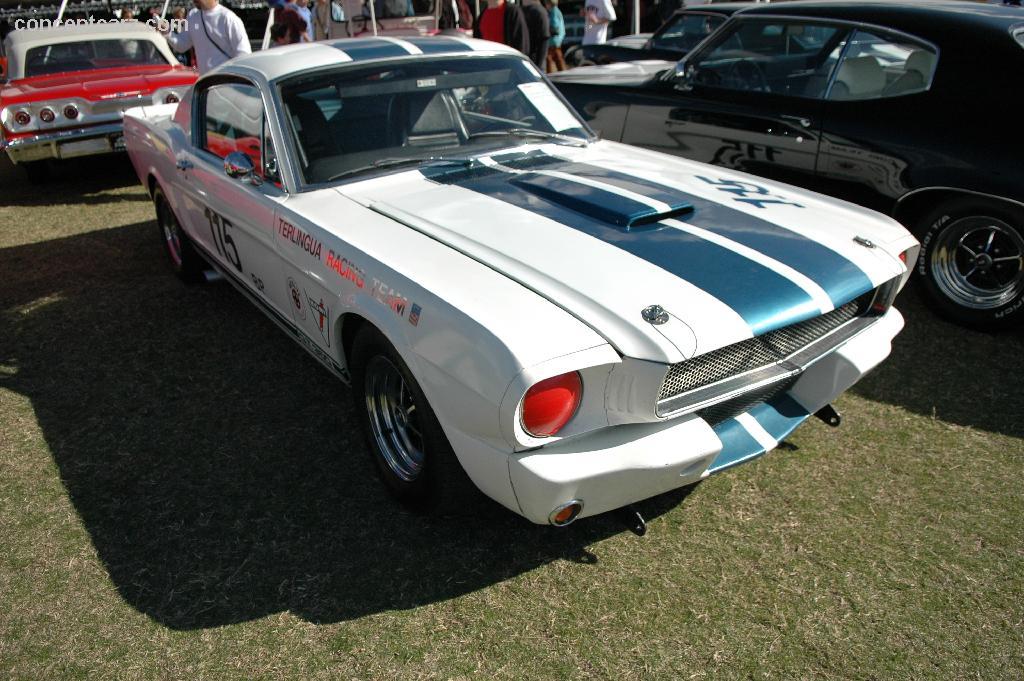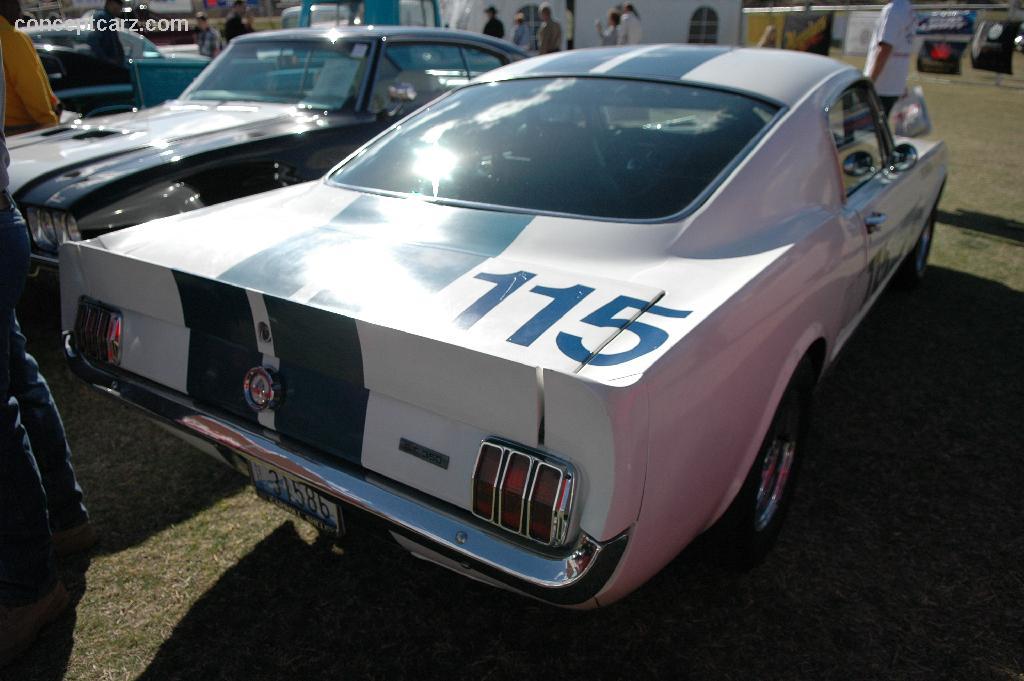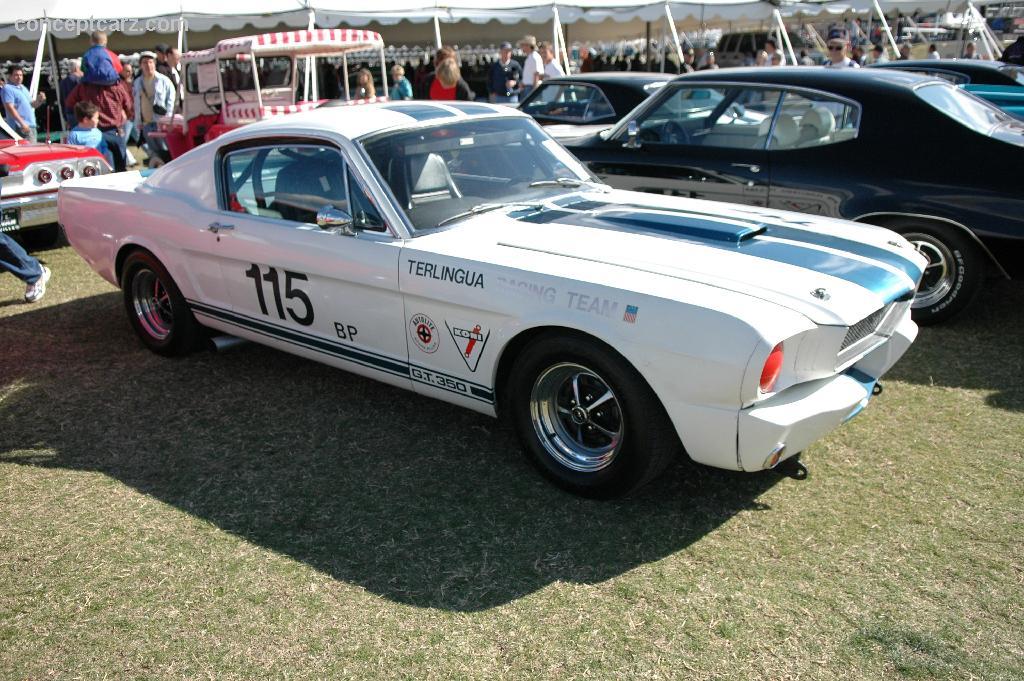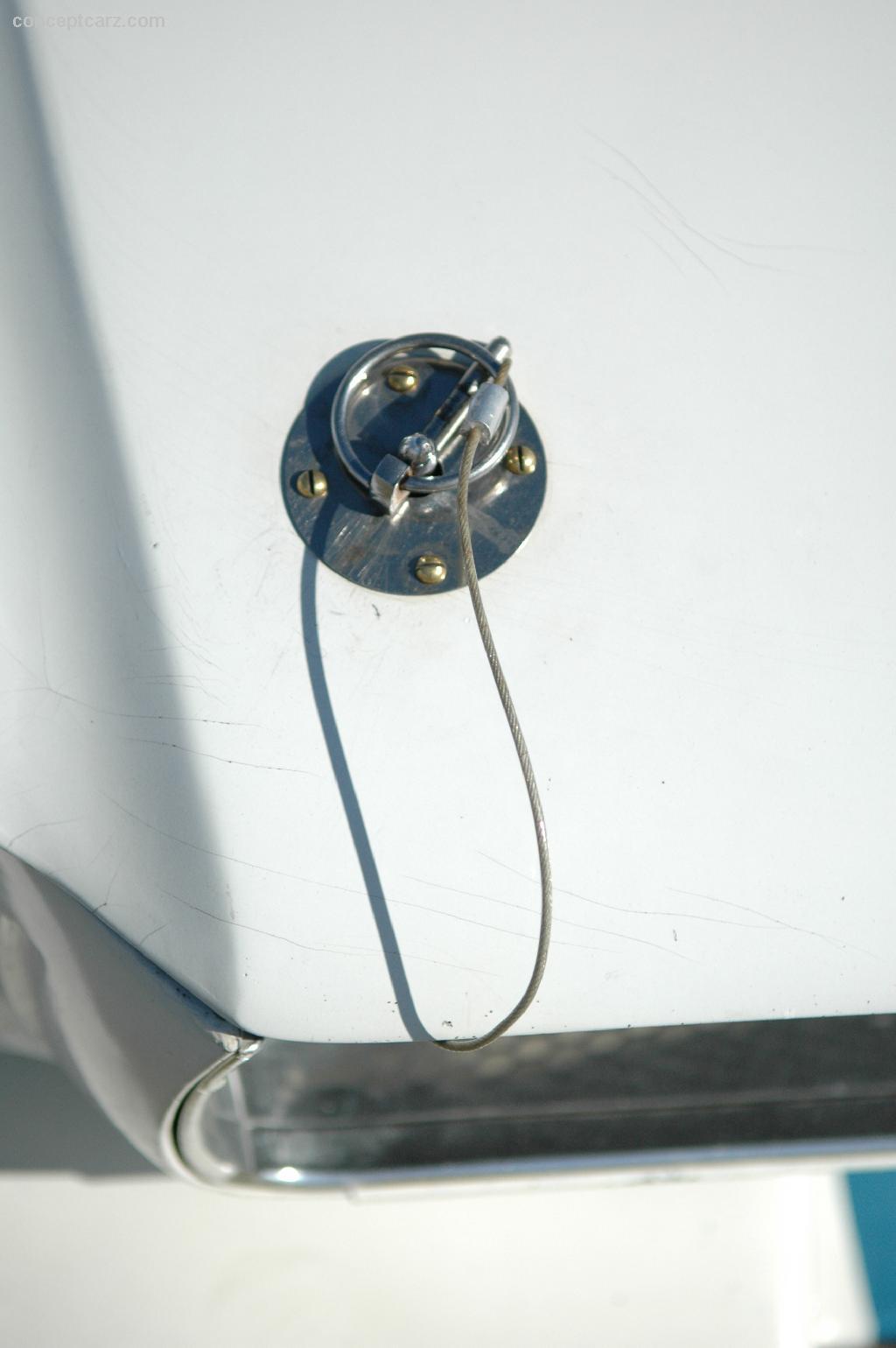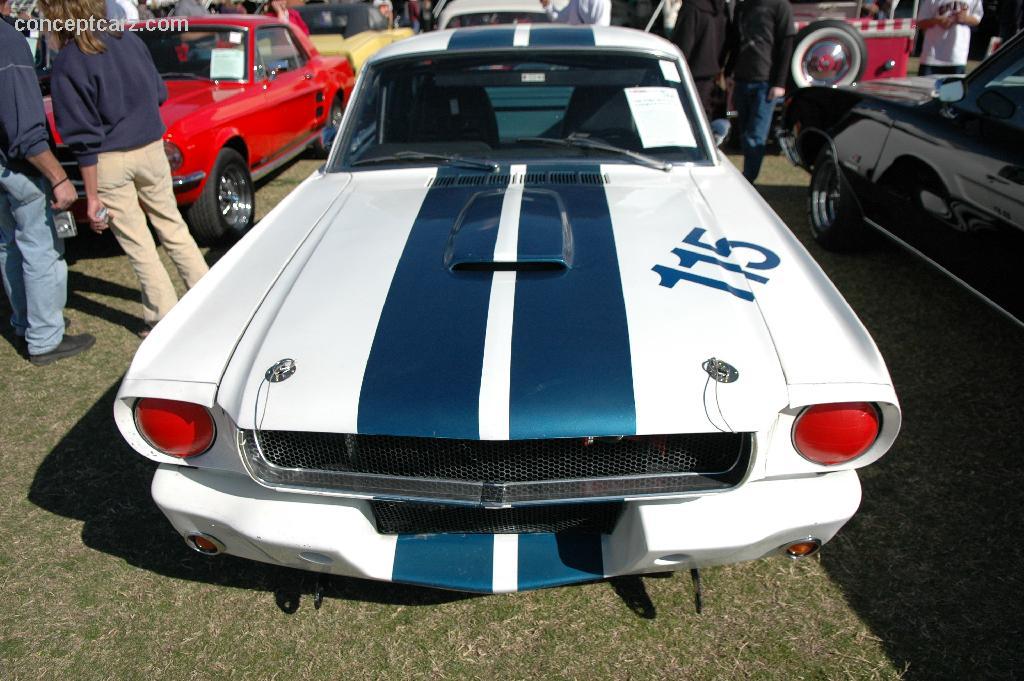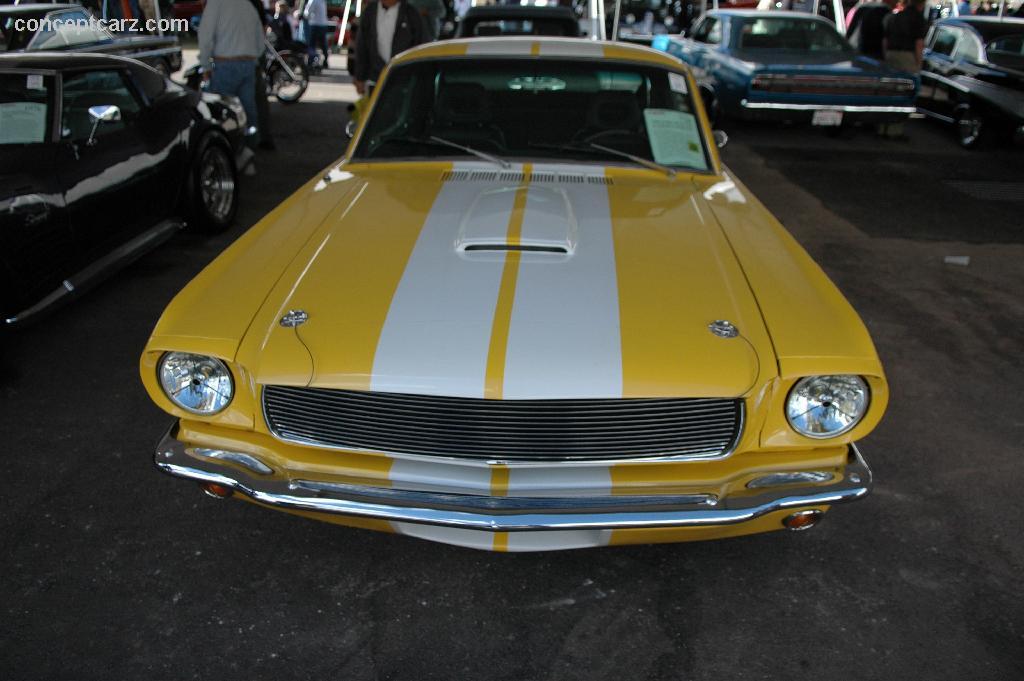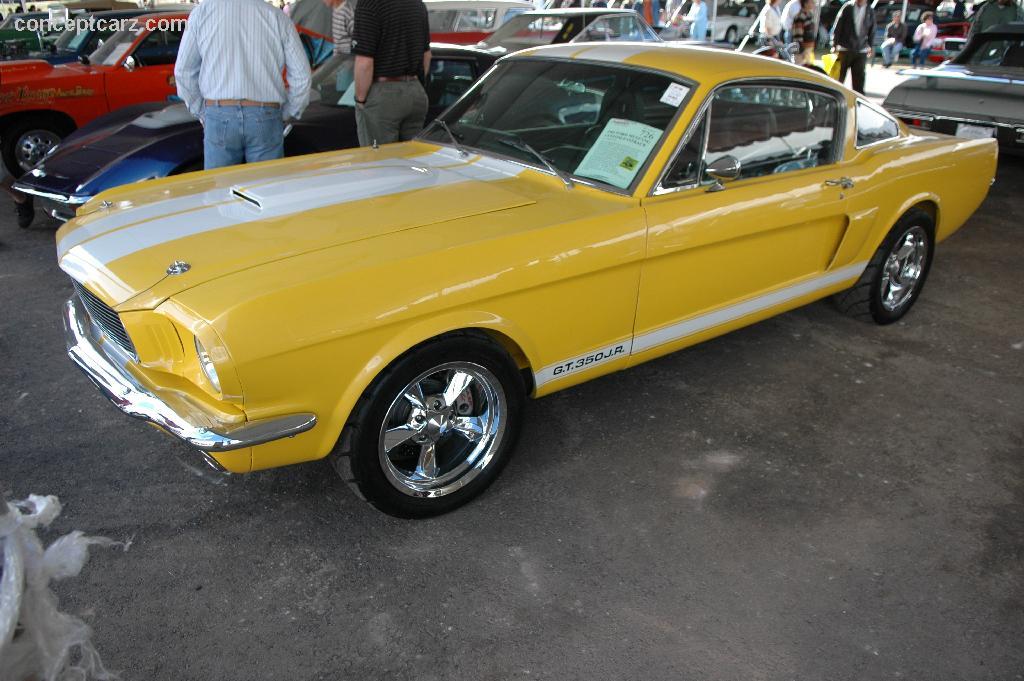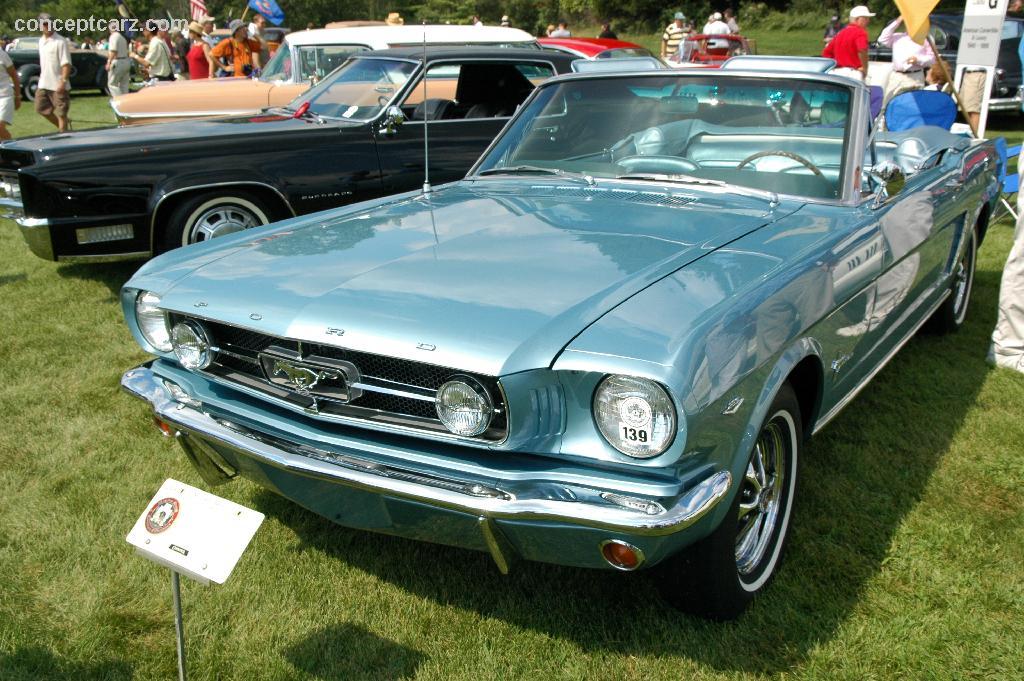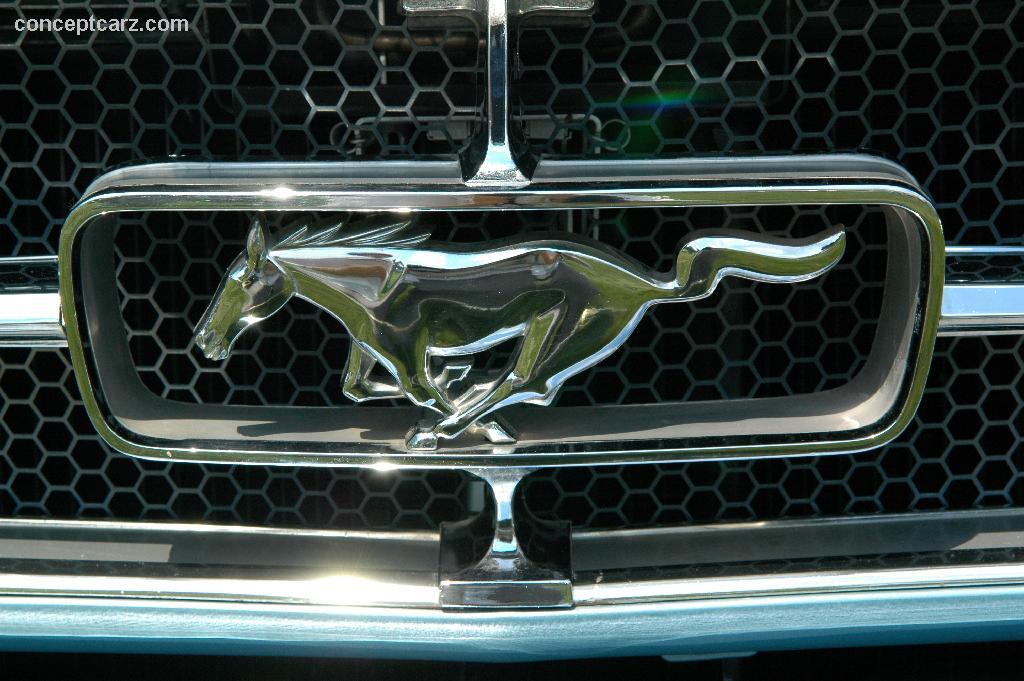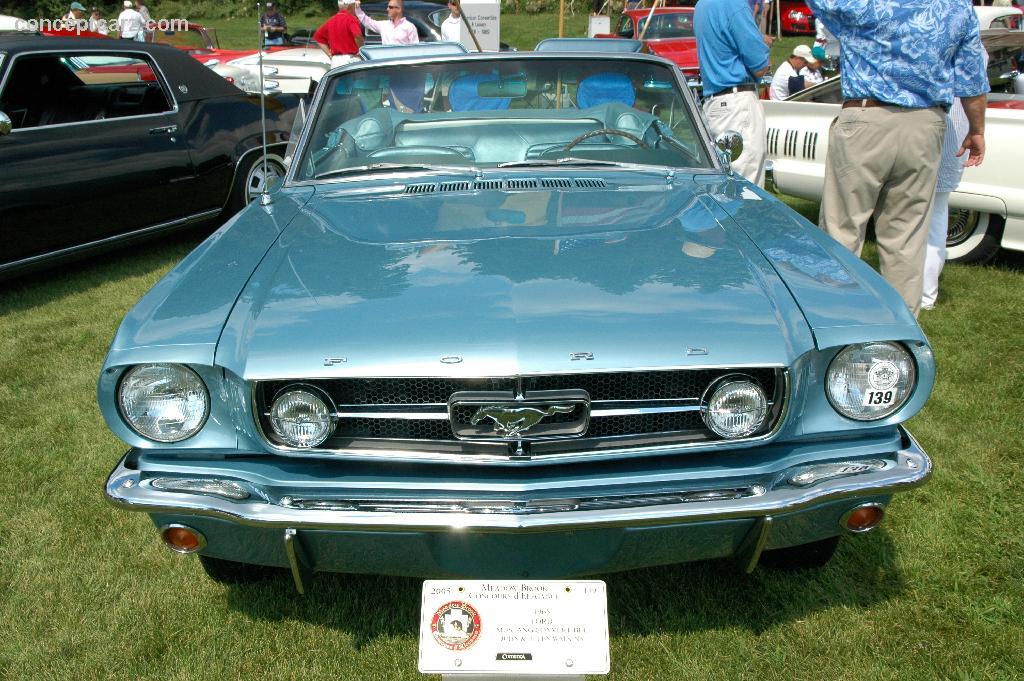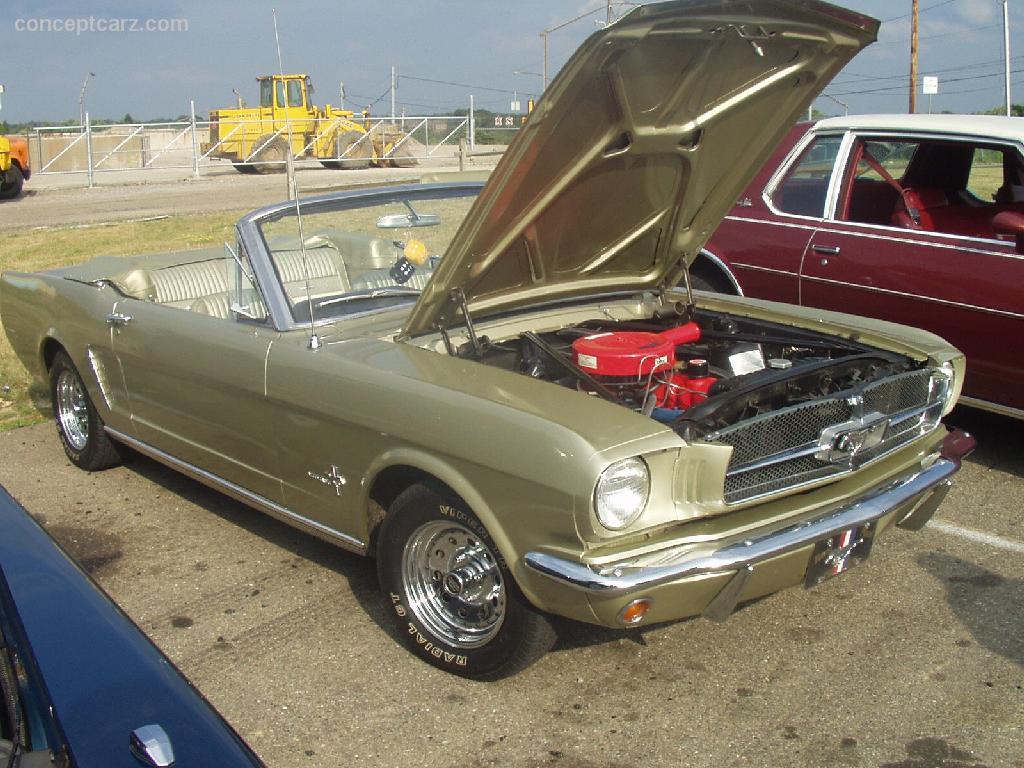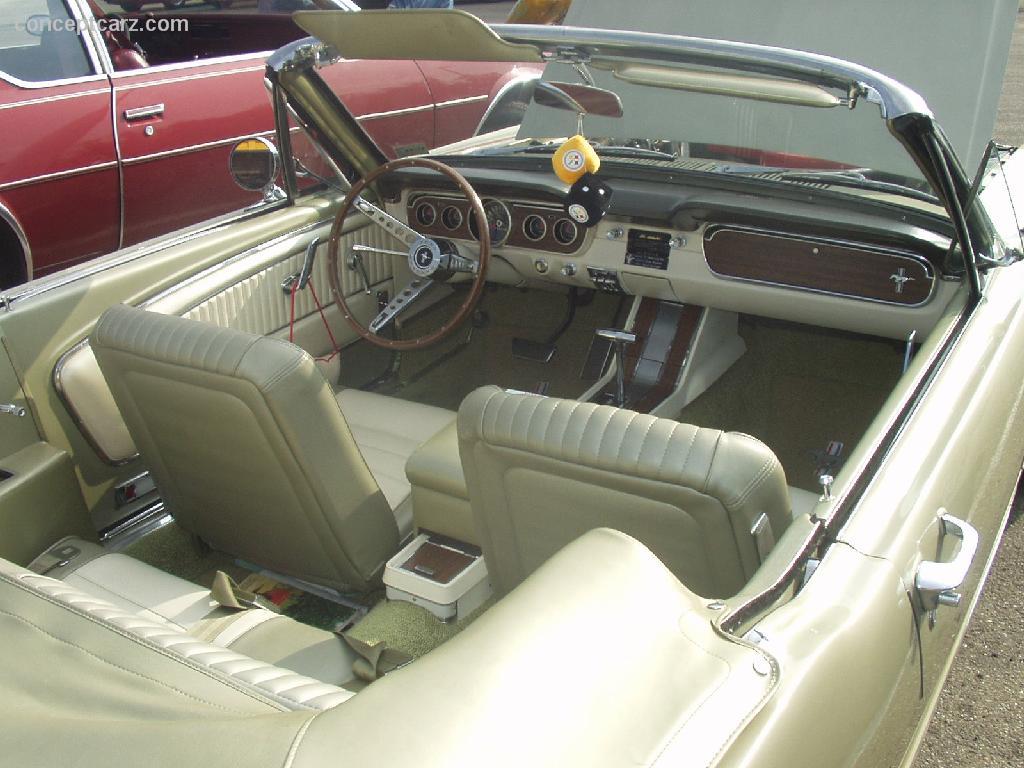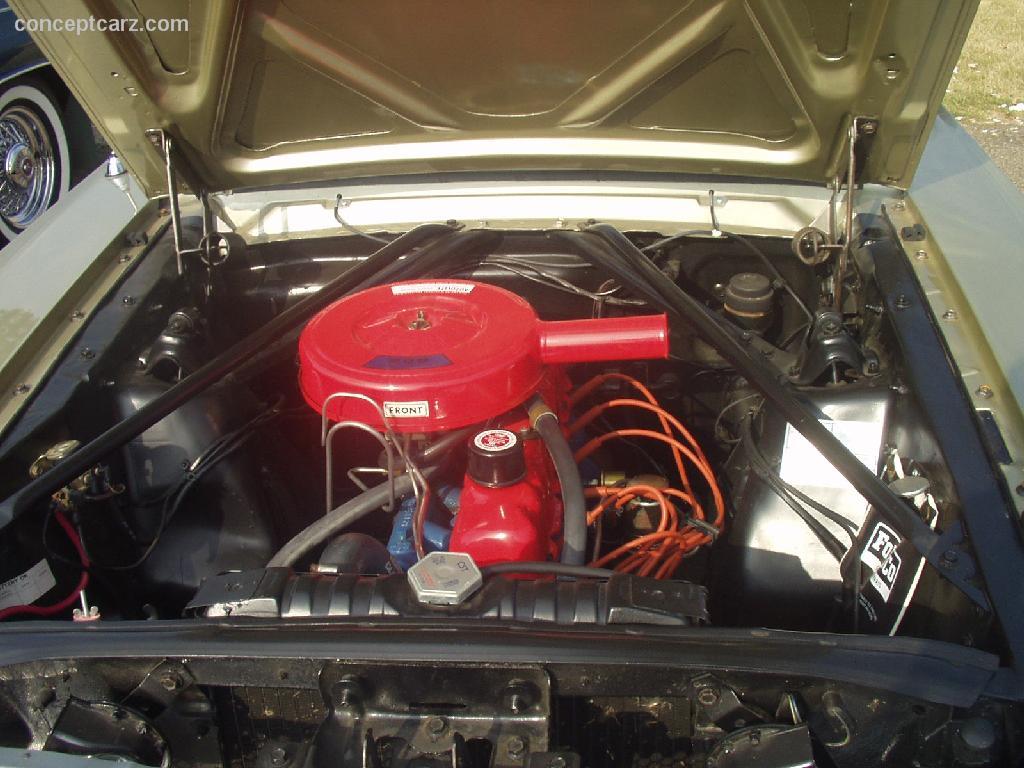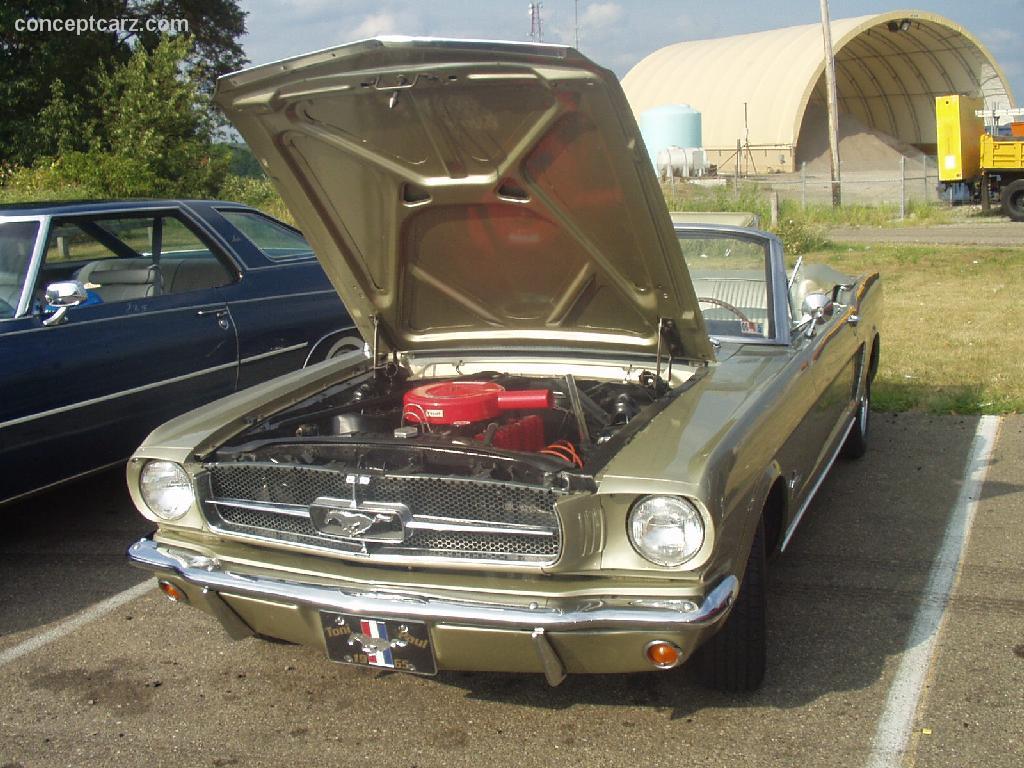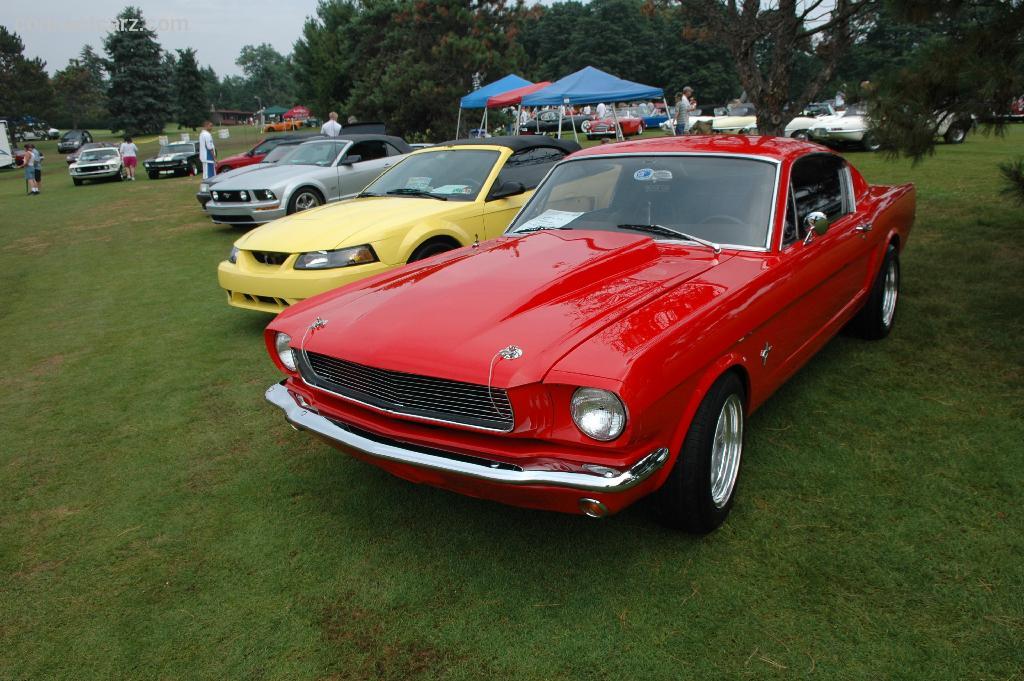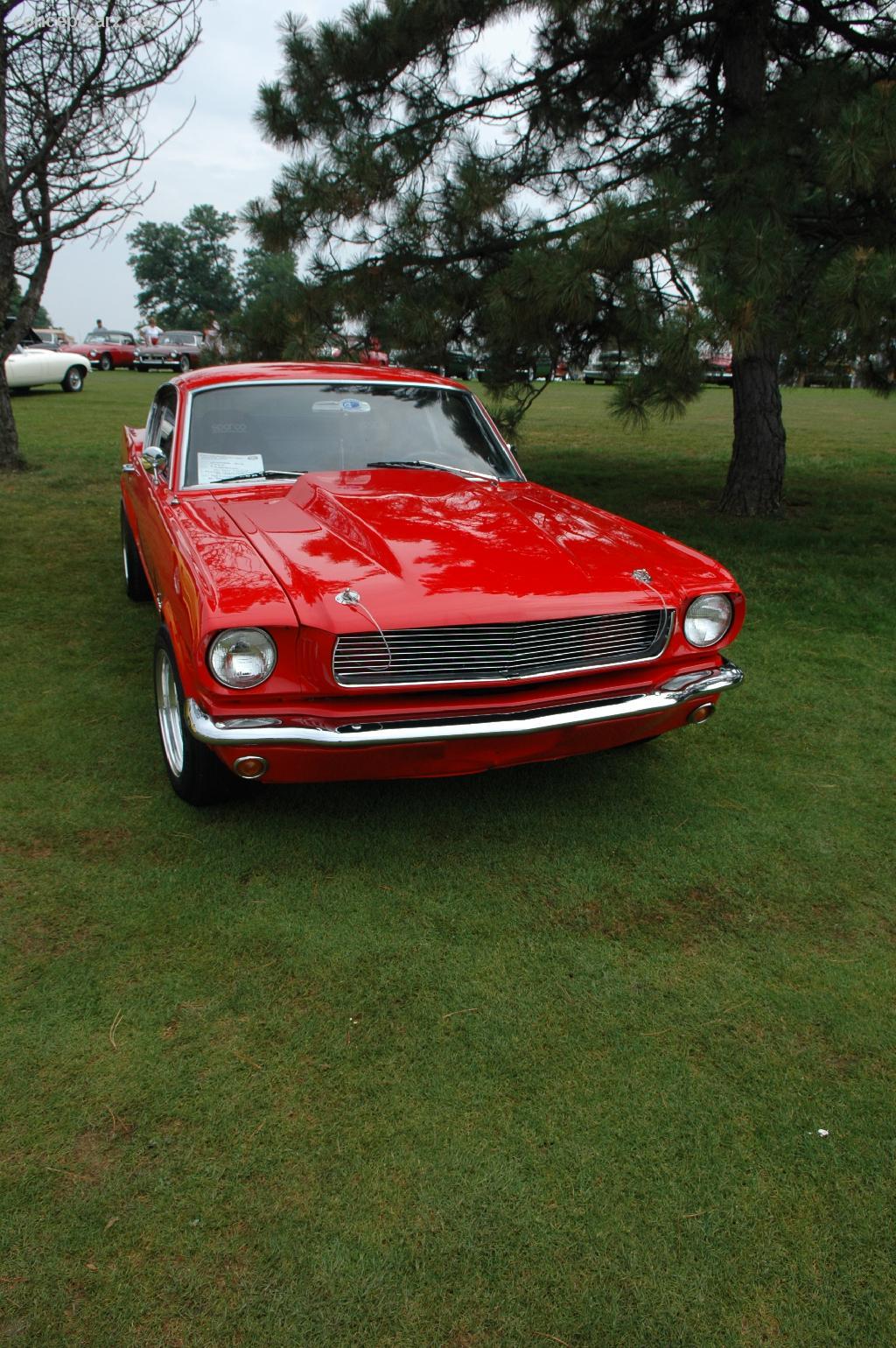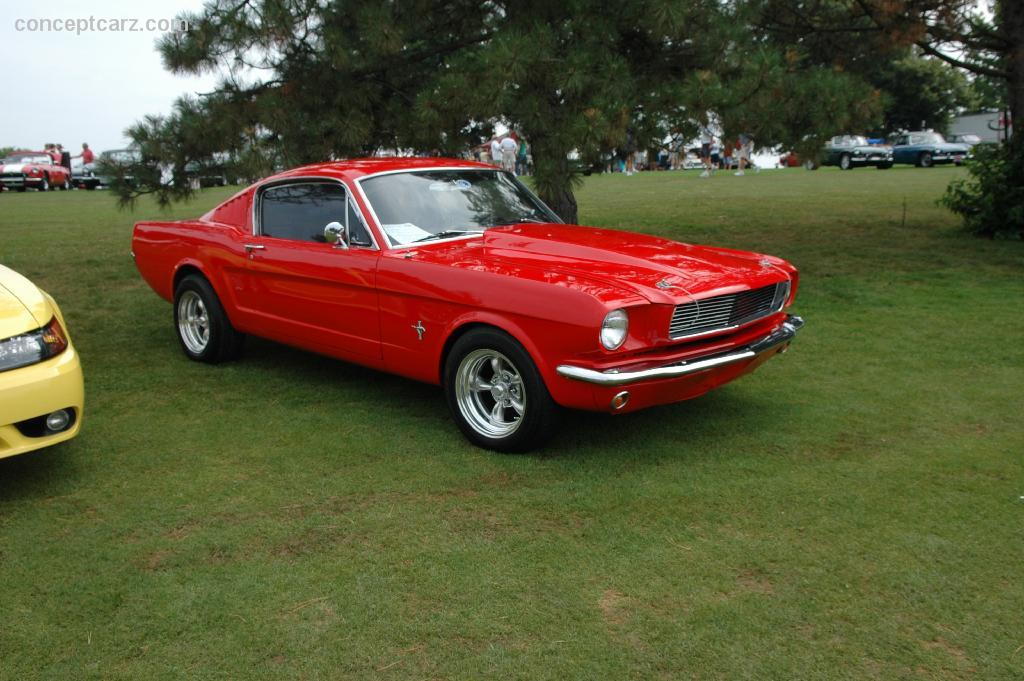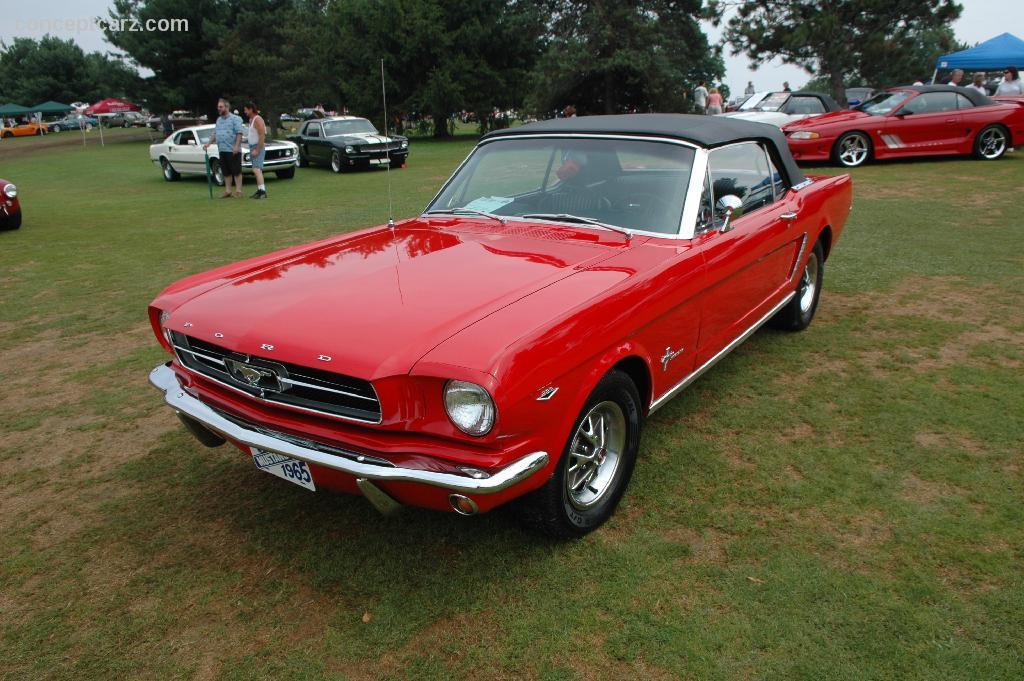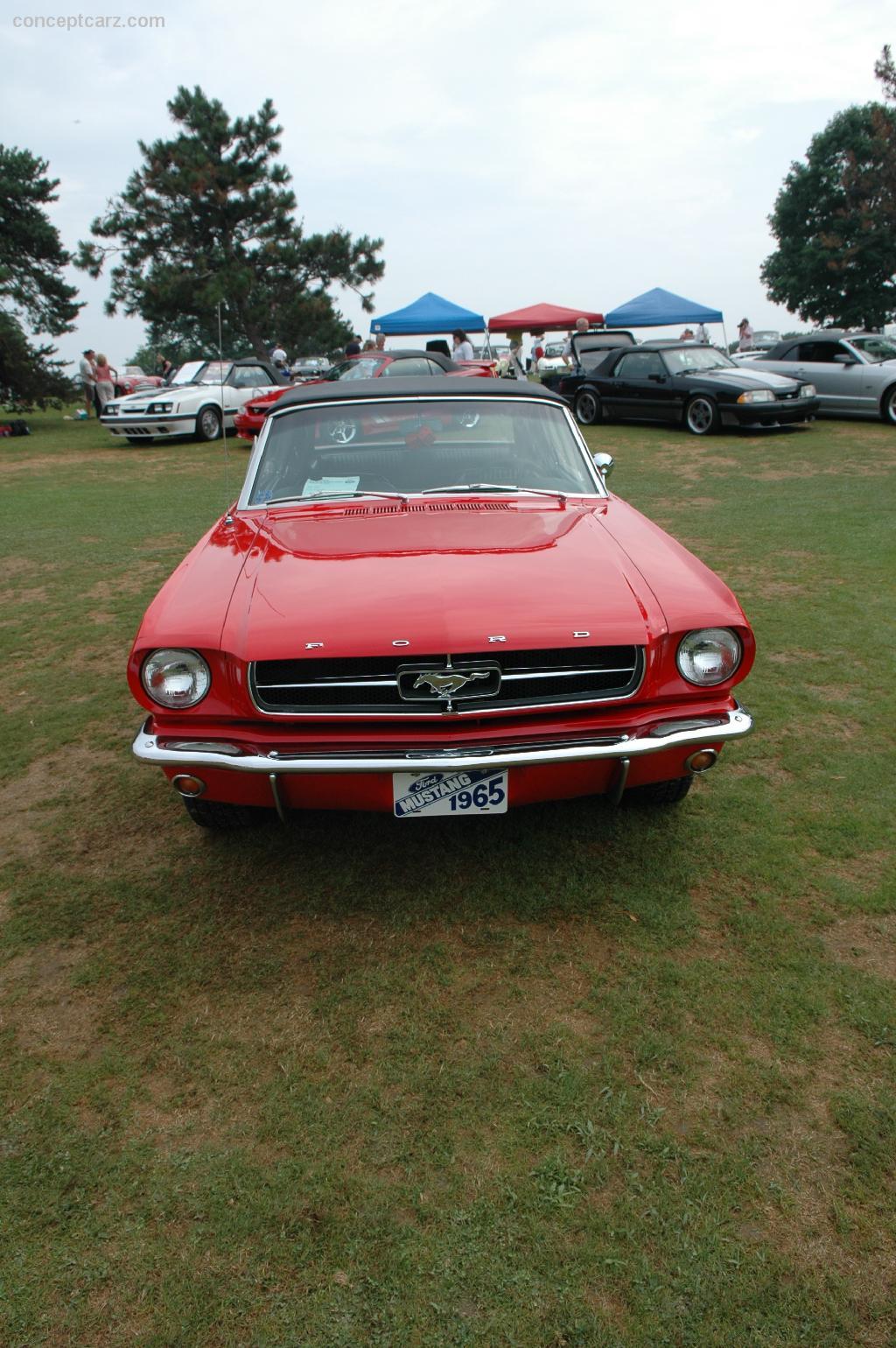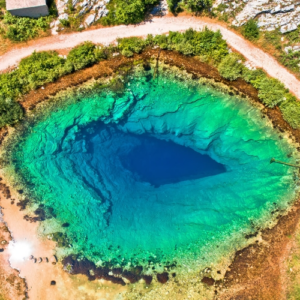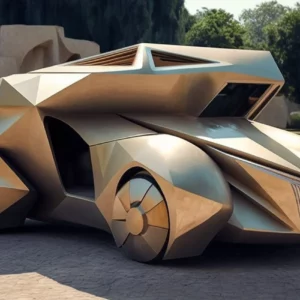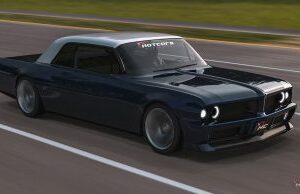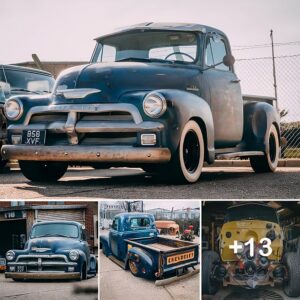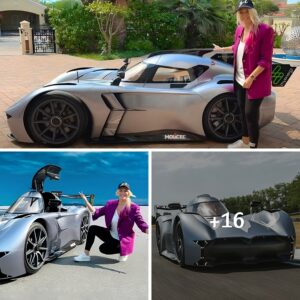The Ford Mustang, introduced in 1964, became an overnight sensation and the most successful model launch in automotive history. Its styling was fresh and modern, and combined sporty performance with personal luxury. Spawning a new ‘pony car’ market segment, the Mustang’s appeal was further enhanced by its broad option list, allowing buyers to specify anything from a coupe to a fully equipped convertible. During Ford’s ‘Total Performance’ era of the 1960s, the Mustang’s options list included a wide range of powertrain combinations from inline sixes to the high-winding 289 V-8 engines in solid-lifter tune. Both manual and automatic transmissions were available to suit any driving style. With its shortened rear deck, an extended hood, and sporty bucket seats, the Mustang could be configured as a family sedan for grocery-getting purposes, or outfitted with enough features to satisfy the performance enthusiast.
Production of the Ford Mustang began five months prior to the start of the 1965 production year, with the early production versions often referred to as ‘1964½ models.’ They were, however, advertised, titled, and VIN coded by Ford as 1965 models. Production began in Dearborn, Michigan, on March 9th of 1964 with the public introduction occurring on April 17th, 1965 at the New York World’s Fair. Total model year production lasted eighteen months with more than one million Mustangs built.
The first 121,538 Mustangs built had unique features that have earned them a distinction with purists as ‘1964½’ Mustangs. The list includes horn rights with the ‘Ford Falcon’ logo covered by a trim ring with a ‘Ford Mustang’ logo. Later cars had alternators instead of generations, a larger 200 CID six-cylinder engine (up from 170 CID), and a larger 289 CID V8 (up from 260 CID). Early six-cylinder cars had 4 lug 4.5×13 inch wheels and 13×6.5 tires. Optional whitewall tires measured 7.00×13. All 8-cylinder engines used 5 lug pattern on their rims. Optional on V8 cars were 14 x 14.5 rim and 6.50×14 tires. Mustangs equipped with V8 engines, beginning in 1965, used 4.5×14 rim and use 6.95×14 tires. The 15×5 wheels were an option and used 5.90×15 tires. The 15-inch opti9on was later dropped and later-built HiPo cars were equipped with 14-inch rims and dual red line sidewall tires.
All 1964 and 1965 built Mustangs have the ‘5’ in the first place of the VIN. 1964.5 built cars have engine codes D, K, U while the 1965 built cars have a C, T, or A. Less than one percent of the 1964/65 production year were the K-code convertibles. The K-Code engine was first introduced by Ford in 1963 and used in the Fairlane, Falcon, and Comet. It first became available in early 1965 (sometimes referred to as the 1964 ½) Mustangs. Each K-Code Mustang had a special badge on its front fenders that read ‘HIGH PERFORMANCE 289’. K-Codes were not available with power steering, air conditioning, or automatic transmission (until the 1966 model year). Prior to 1966, K-Code Mustangs were equipped with a four-speed only. K-Codes differed from the other D, C, and A code 289 engines, featured in the 1965 through 1967 Mustangs, with upgraded pistons, carburetor, lifter heads, connecting rods, and cylinder heads. Additionally, they had the chrome air cleaner and valve covers, and ‘289 High Performance’ lettering atop the air cleaner, a high-performance clutch, driveshaft, rear differential, and suspension. The modified K-Code engine was the first engine used by Carroll Shelby in his Shelby GT350 Mustang. The GT350 Mustangs wrestling away the SCCA B-Production road racing dominance from Chevy’s Corvette, which it did for three years straight from 1965 through 1967.
The base Mustang, a four-passenger hardtop coupe, sold for $2,368 and came with a 170 CID six-cylinder engine developing 101 horsepower. The convertible pricing began at $2,614. The 260 CID V8 engine developed 164 horsepower and the base 289 CID overhead valve engine with a four-barrel Model C4AF-9510-B carburetor had 210 horsepower. The Challenger High-Performance 289 CID version boosted power to 271 HP. Shortly after production began, in the fall of 1964, the 200 CID and 289 CID V8 became the standard powerplants.
The standard transmission as the three-speed manual with floor lever controls. Other standard features included a heater, defroster, cigarette lighter, glovebox light, door courtesy lights, front bucket seats, sports steering wheel, and color-keyed carpeting.
During 1965, the Mustang received a mildly redesigned interior with the original Ford Falcon-designed instrument cluster replaced by a five pod design with the speedometer in the center flanked by two smaller gauges on each side.
The optional air conditioning system and nearly all of the bolt-on options could be installed by the factory or the dealer.
The GT option included GT gas cap, GT rocker paint stripes, GT side emblems, grille-mounted fog lights, and unique exhaust trumpets. The interior received a special 5 gauge instrument cluster. Mechanical upgrades included manual front disc brakes, F70x14 tires, and upgrades to the suspension. An additional Rally-Pac option consisted of a 5-dial instrument cluster or a 4 dial version.
Officially introduced on April 17th of 1965, the interior decor group added a five-dial instrument cluster with full instrumentation, wood grain appliques on the instrument panel, galloping pony embossed seat covers, bright trim cap on hardtop quarter trim panel, vinyl-covered quarter trim panels, faux-walnut deluxe steering wheel, bright pedals, wood grain glove compartment door, and molded door panels with pistol grip door handles.
Mustangs with the full front bench seat (a mid-year introduction) could not get the interior decor group, GT package, or the console.
The Special Handling Package used a 22 to 1 steering ratio, a larger diameter front stabilizer bar, heavy-duty shock absorbers, and increased rate springs. The 200 and 225 HP Mustangs could be fitted with a Special Handling Package, which came default with the GT group, and all 271 HP engines came with this option by default. 7,273 examples of the HiPo cars were built and came with a 9-inch differential, 15.5-inch wheels, 5.90×15 tires, and gear ratios of either 3.89 or 4.11.
37 official Pace Car White Mustang convertibles were built for the 1964 Indianapolis 500 race. Two were used to pace the race while the other 35 were given to race officials and dignitaries. For promotional purposes, an additional 185 replica hardtops were built with the 260 CID engines and automatic transmissions.
Ford Motor Company’s market planners anticipated first-year Mustang sales around the 100,000-unit mark, however, this conservative figure was reached in just four months following release. By 1966, one million Mustangs were on the road. The Mustang was the exact right car at the exact right time, resulting in over a million examples sold in less than two years. The Mustang’s success immediately triggered competition from every major American car company, but none of them achieved its enduring level of success or longevity.
Available as a Notchback Coupe, Convertible, or, from 1965, as a Fastback Coupe, the Mustang was attractive and versatile to a Plethora of needs and desires.
The Name
The name of the Mustang is credited to executive stylist John Najjar, who was a fan of the World War II P-51 Mustang fighter plant. Najjar and fellow Ford stylist Philip T. Clark created the design of the first Mustang prototype in 1961, known as the Ford Mustang I.
Another version of the story credits Ford Division market research manager (and a breeder of quarter horses), Robert J. Eggert, with the birthing of the name. Mr. Eggert received a book from his wife titled, The Mustangs by J. Frank Dobie in 1960. The name of the title is said to have inspired the name for Ford’s new concept car.
In Germany, the name ‘Mustang’ was used by Krupp for a series of trucks it had been producing since 1951. Kreidler, a manufacturer of models, also used the name. So Mustangs sold in Germany were labeled as the ‘T-5’ until December of 1978.
